Bright, personality-packed kitchens of the 1970s are enjoying a joyful revival—and with good reason. Designers say the era’s earthy colors, tactile materials, and dash-of-disco fun add soul to otherwise sterile cooking spaces, while modern finishes keep everything user-friendly. Below you’ll find 20 concise, actionable ideas—each one a bite-size recipe for bringing retro charm into a 21st-century kitchen without feeling like a museum set.
1. Avocado-and-Gold Color Burst Kitchen
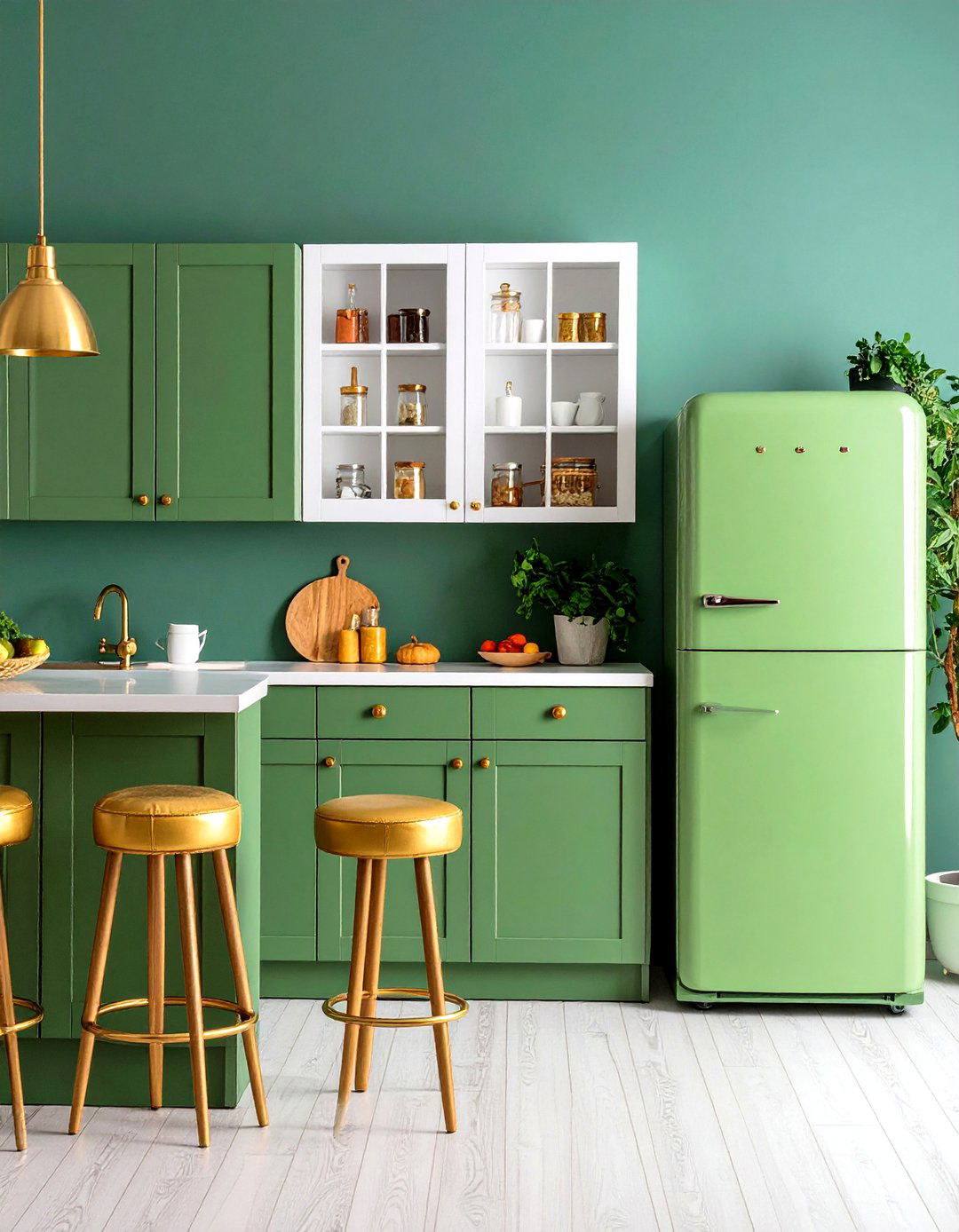
A warm rush of avocado green and harvest-gold accents instantly teleports a kitchen back to the 1970s while still feeling fresh when balanced with plenty of white or wood. Paint a single bank of cabinets or a vintage fridge in these heritage shades, then repeat the hue in smaller doses—think utensil crocks, barstool cushions, or even cookware—to create a cohesive palette. Swap-able items mean you can dial the saturation up or down as trends shift, yet the base color story still delivers that unmistakable 70s optimism every time you walk into the kitchen.
2. Wood-Veneer Cabinet Warm-Up Kitchen
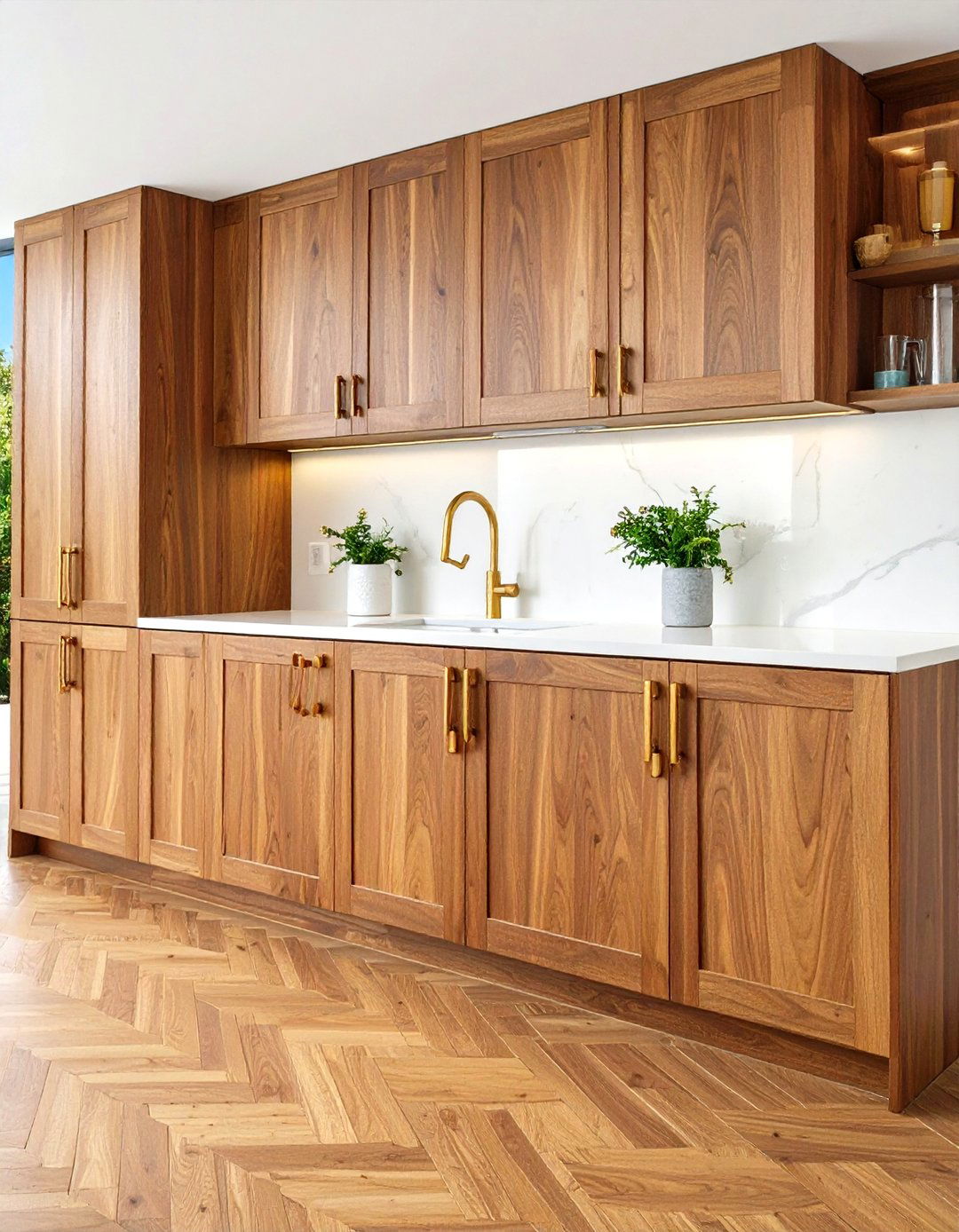
Unlike today’s high-gloss lacquers, 70s kitchens wrapped slab doors in richly grained wood veneer, giving even modest homes a cozy, custom feel. Re-face existing boxes with walnut, teak, or knotty pine veneer sheets, or simply oil the original doors if they’re still in good shape. Pair the warm timber with matte, unlacquered hardware for an authentic finish and consider staggering door grains horizontally for extra mid-century flair. The natural movement of the wood adds depth, hides fingerprints, and grounds bolder accents elsewhere in the kitchen.
3. Terrazzo Countertop Comeback Kitchen
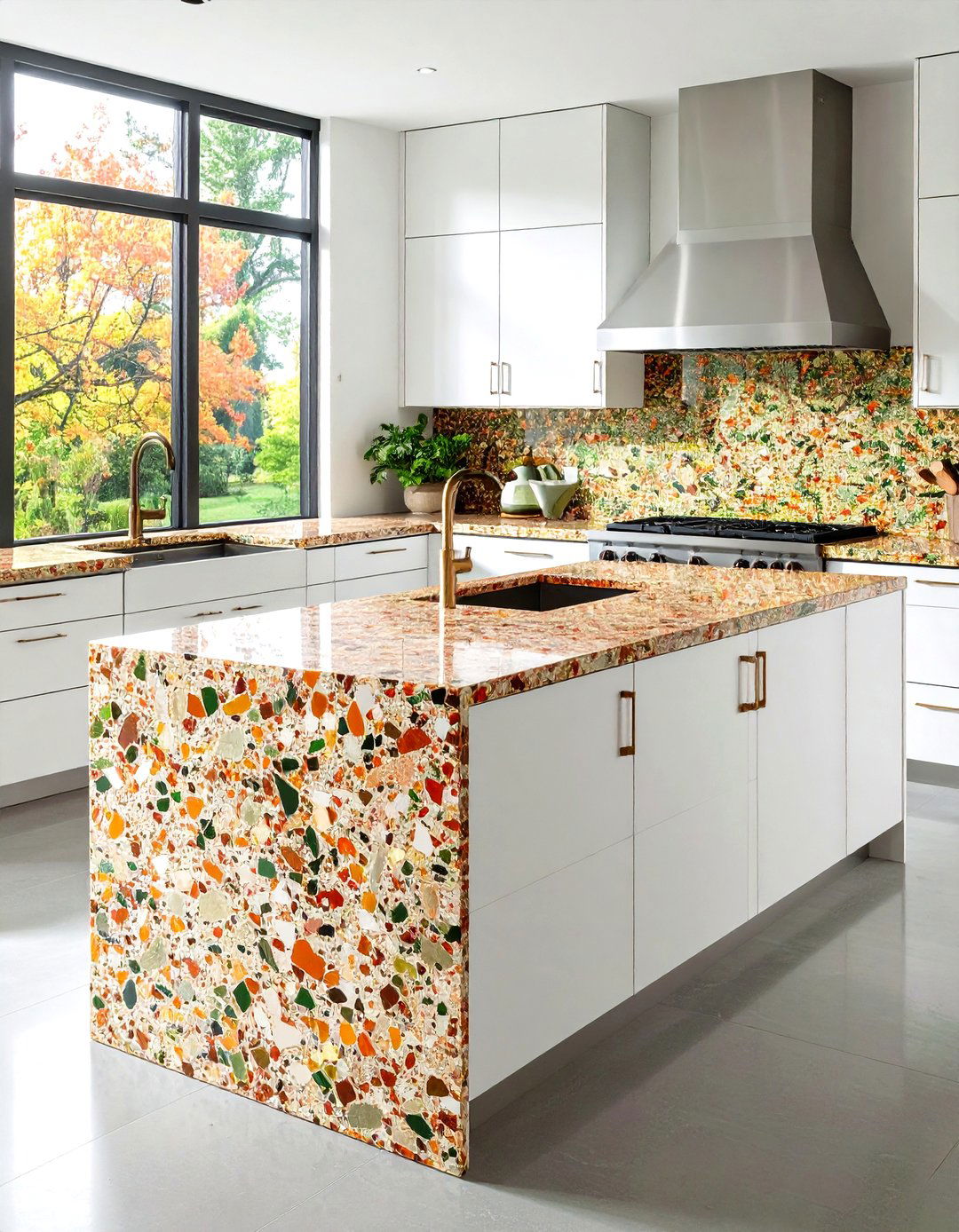
Certainly, terrazzo is striding back into kitchens, offering a playful, speckled surface that shrugs off stains and looks as right in 2025 as it did in 1975. Choose a slab peppered with warm ochres, mossy greens, or burnt orange chips to tie in other 70s elements. Because the composite hides crumbs, it’s a practical choice for busy cooks, and newer resin-based versions mean less maintenance than their cement predecessors. Let the countertop climb a few inches up the wall for a mini-backsplash that shows off the pattern without overwhelming the kitchen.
4. Rattan-Seated Breakfast-Bar Kitchen
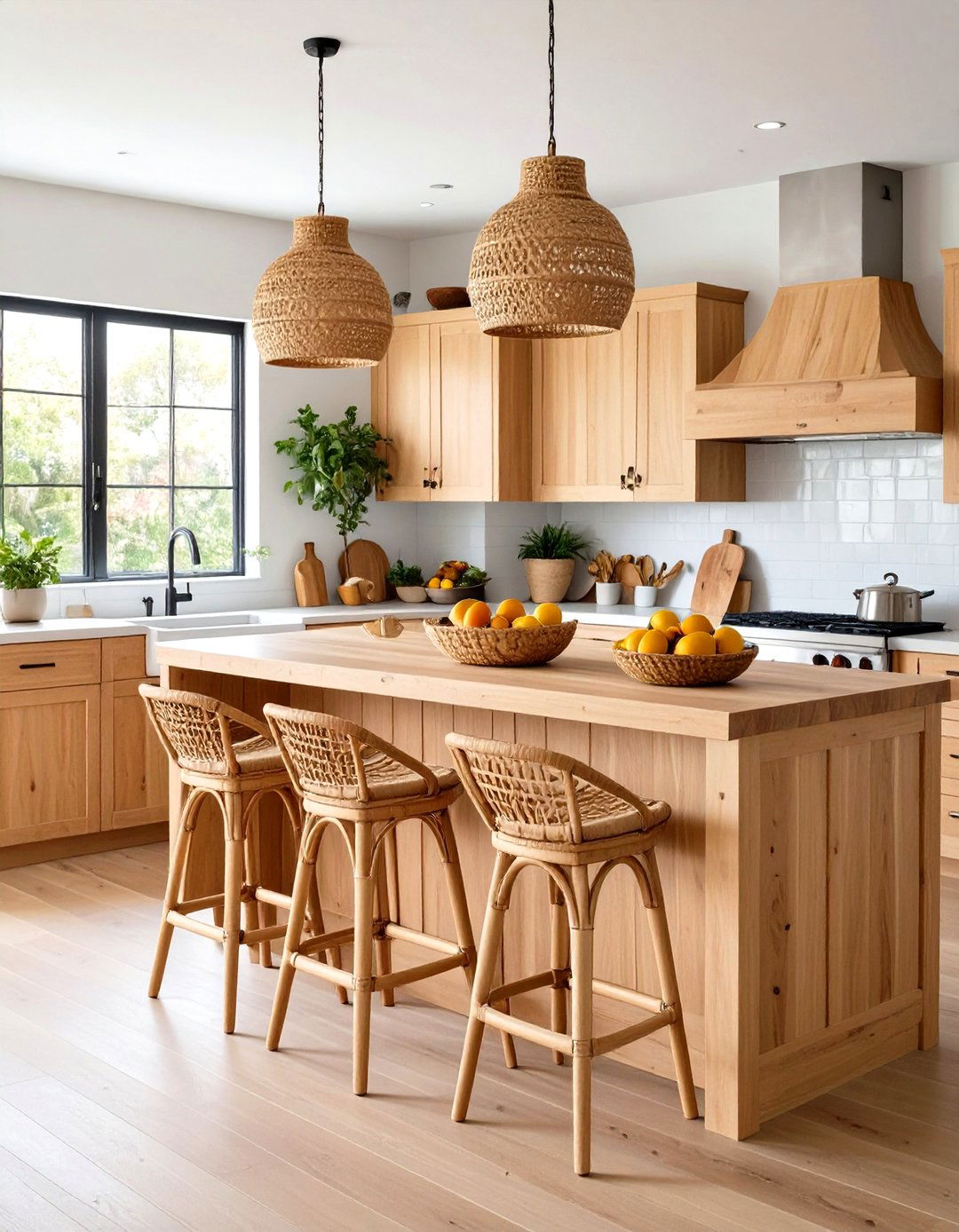
For relaxed, boho energy, swap metal bar stools for rattan-wrapped seats that look lifted from a 1978 sunroom yet clean up effortlessly today. Modern all-weather cords survive spills, so you get texture without babying the furniture. Anchor the stools under a timber or laminate peninsula and echo the woven detail with a rattan fruit basket or pendant shade. The airy frames keep sight-lines open—ideal for small kitchens that can’t handle bulky furniture—while their honey tones tie neatly into wood cabinetry and warm metals.
5. Geometric Wallpaper Feature-Wall Kitchen
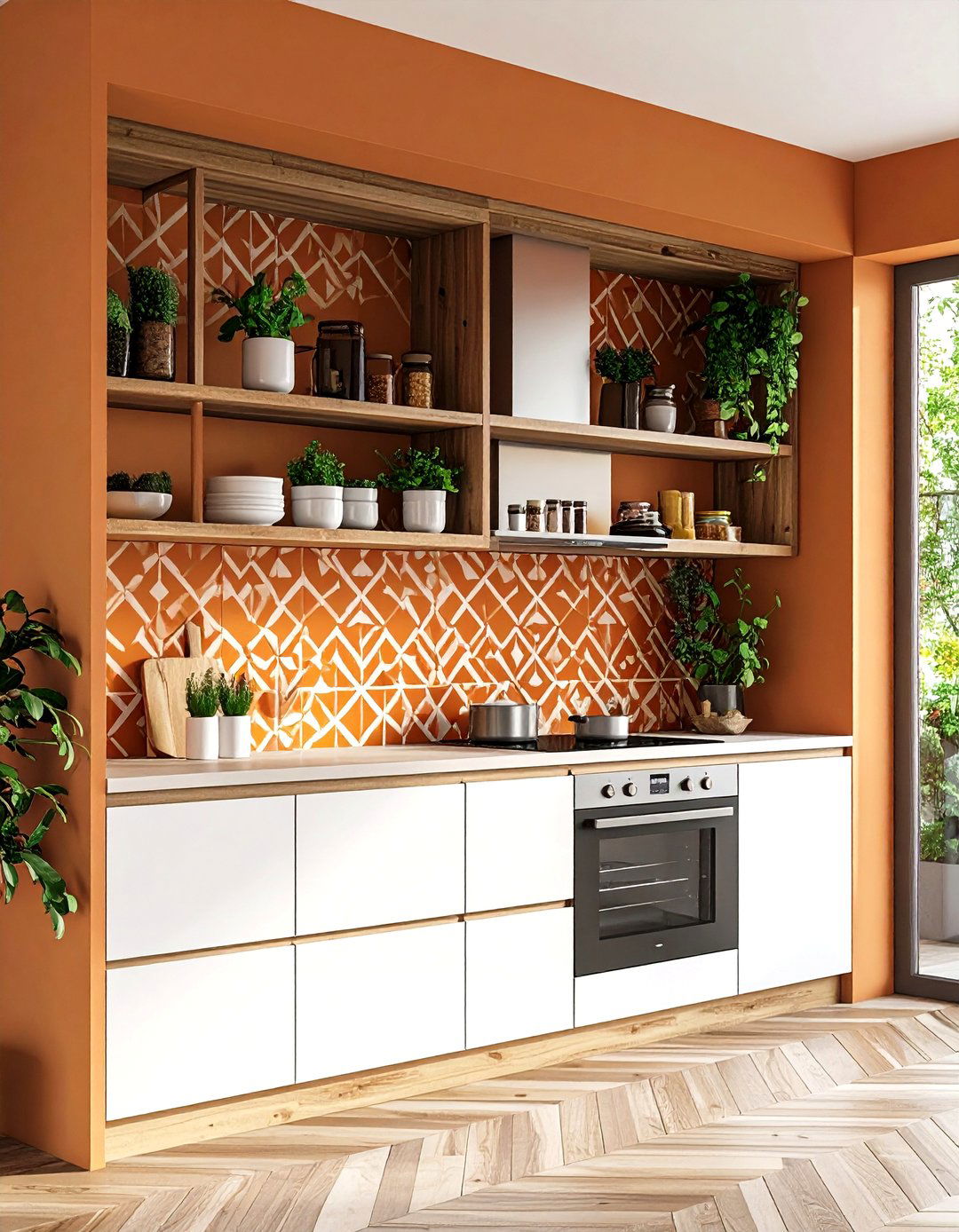
To enliven a blank wall, introduce groovy geometric wallpaper in earthy oranges, browns, and ochres—just one panel can deliver the decade’s signature punch. Peel-and-stick papers make the idea renter-friendly; place the pattern behind open shelves or inside a glass-front pantry for a subtle flash. Keep neighboring surfaces simple—solid countertops, flat-front doors—so the motif reads as art rather than visual clutter. If you have tiled backsplashes competing for attention, pick a wallpaper with similar color notes to stitch the whole kitchen together.
6. Patterned Linoleum Floor-Show Kitchen
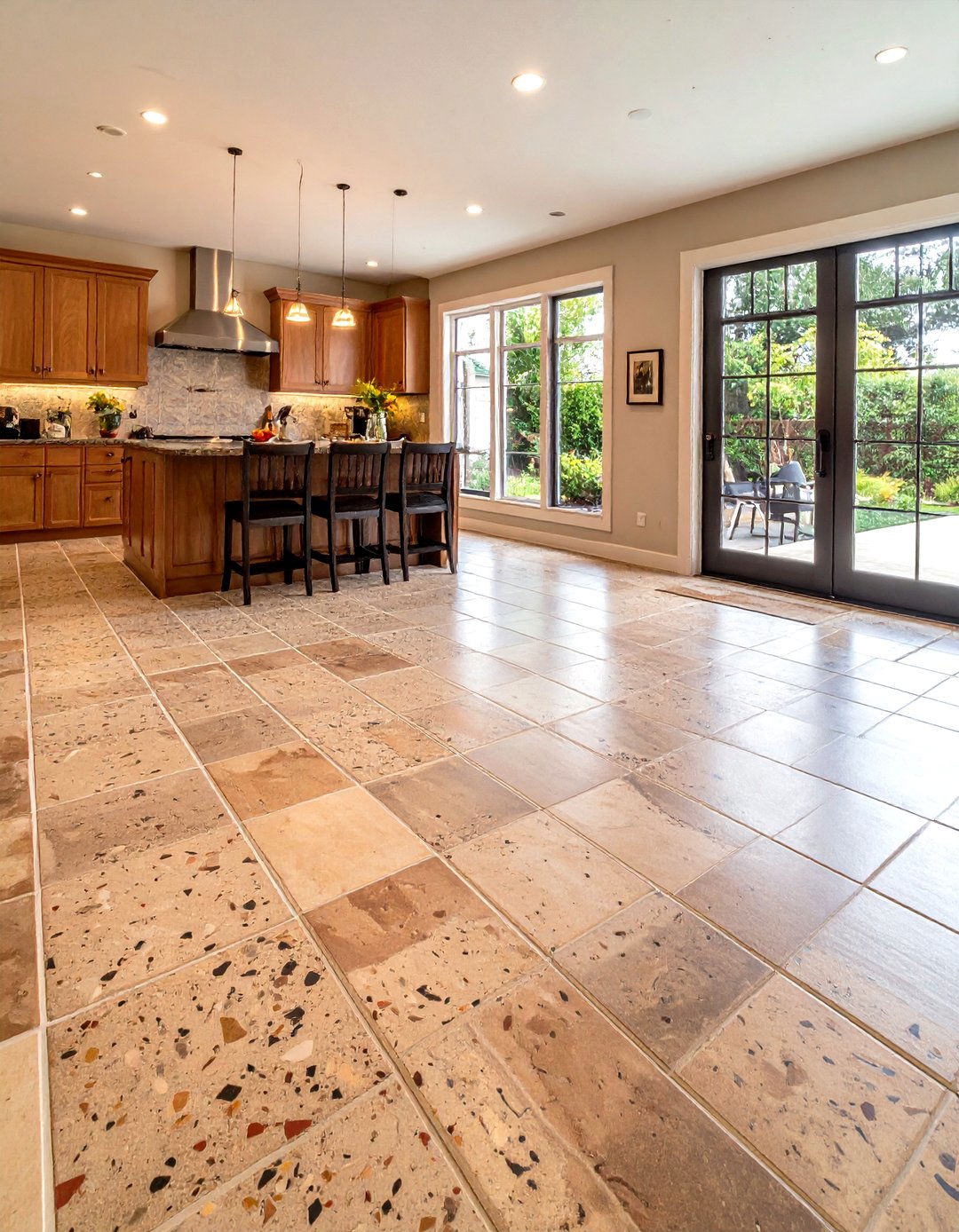
Looking for era-correct swagger underfoot? Vintage-inspired vinyl or linoleum tiles patterned with faux bricks or confetti specks recreate Armstrong’s best-selling 5352 floor without the maintenance headaches. Modern resilient sheets are water-resistant, cushier to stand on, and far easier to install than ceramic. Opt for tawny browns, avocado flecks, or harvest gold tones to anchor brighter cabinetry and break up large expanses of hardwood elsewhere in an open-plan home.
7. Colorful-Appliance Statement Kitchen
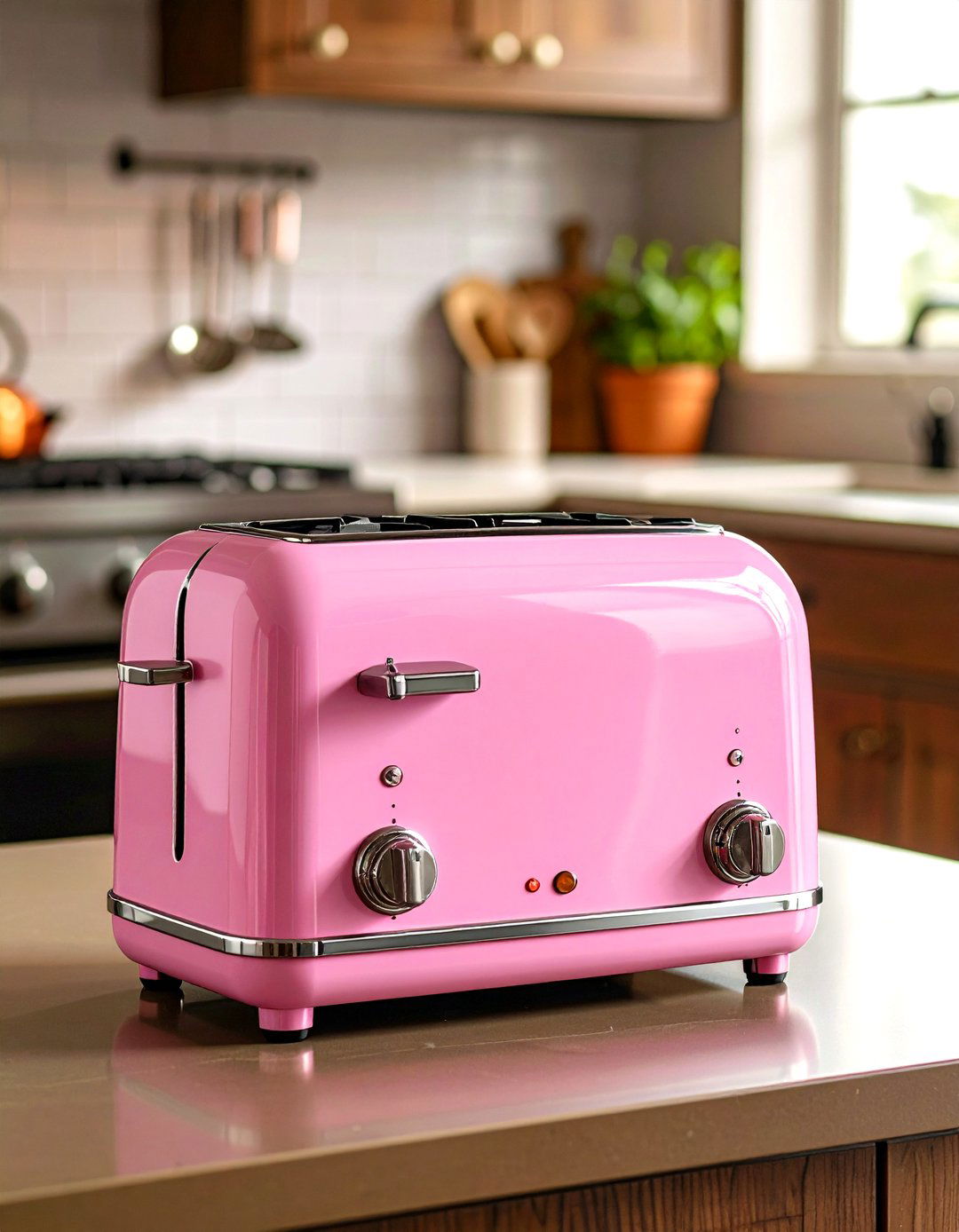
Chowhound reports that appliance makers from SMEG to Kohler are leaning hard into saturated hues, echoing the 70s but with 2025 tech. Start small with a bubble-gum-pink toaster or go bold with a range clad in burnt orange enamel. One brightly colored appliance becomes the focal point, so let stainless accents fade into the background. Coordinate the shade with a single cabinet bank or a stripe in the floor runner for cohesion without overkill.
8. Unlacquered-Brass Accent Kitchen
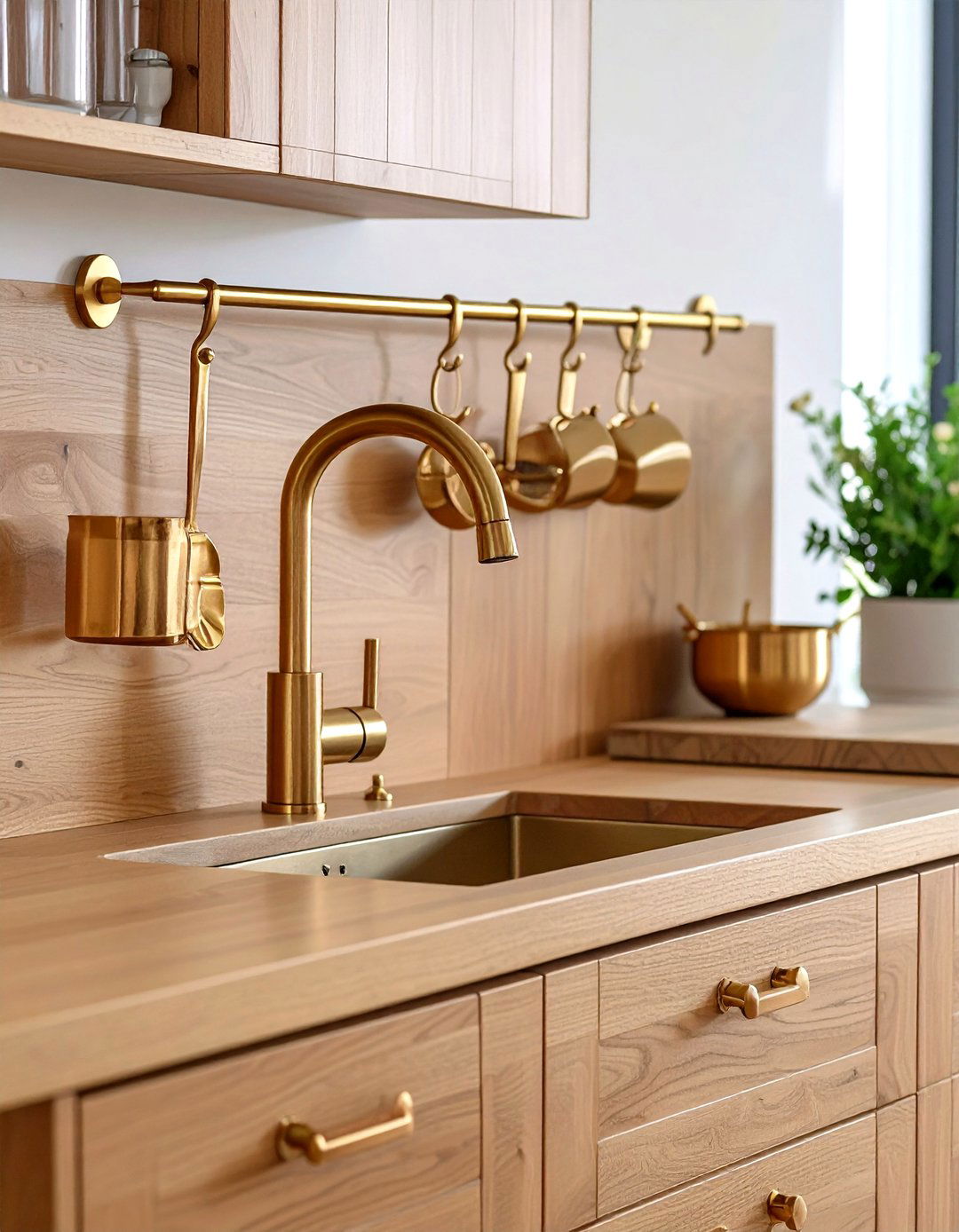
Bringing in raw brass pulls and faucets channels 70s glamour while adding patina-rich warmth designers now call a “must.” The living finish darkens over time, complementing both wood veneer and startling color combos. Swap only the hardware first; if you love the effect, level up with a brass pot rail or shelf edging. Because the metal reads as jewelry, a little goes a long way toward making the whole kitchen feel thoughtfully finished.
9. Hanging-Houseplant Boho Kitchen
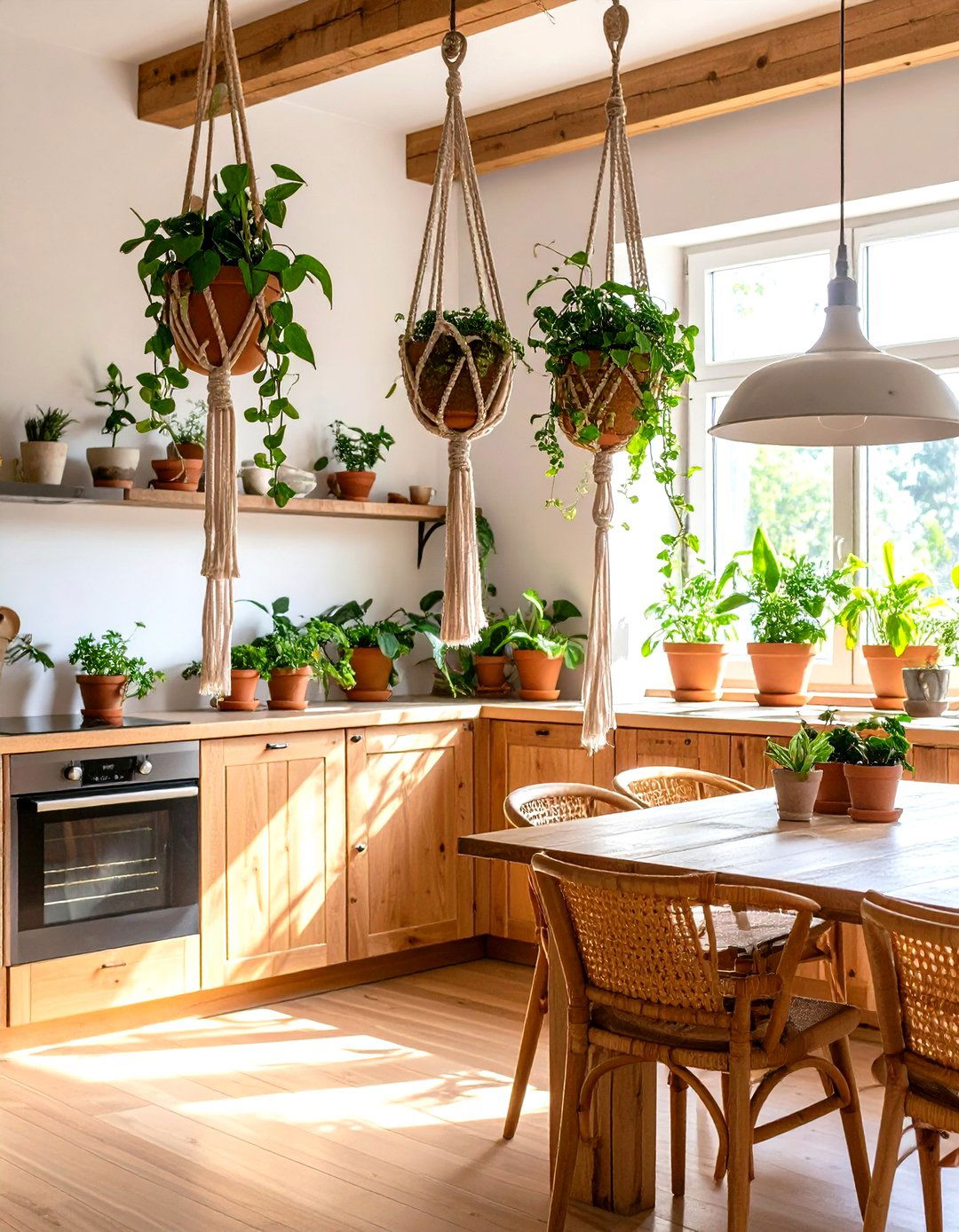
With houseplants draped from macramé slings, a kitchen earns instant 70s credibility and fresher indoor air. Suspend trailing pothos or hoyas beside the sink where humidity helps them thrive, or cluster planters over a breakfast nook for a living chandelier effect. Natural greenery cuts through heavy wood and patterned elements, softening the room while adding biophilic benefits that modern homeowners crave.
10. Disco-Ball Pendant-Light Kitchen
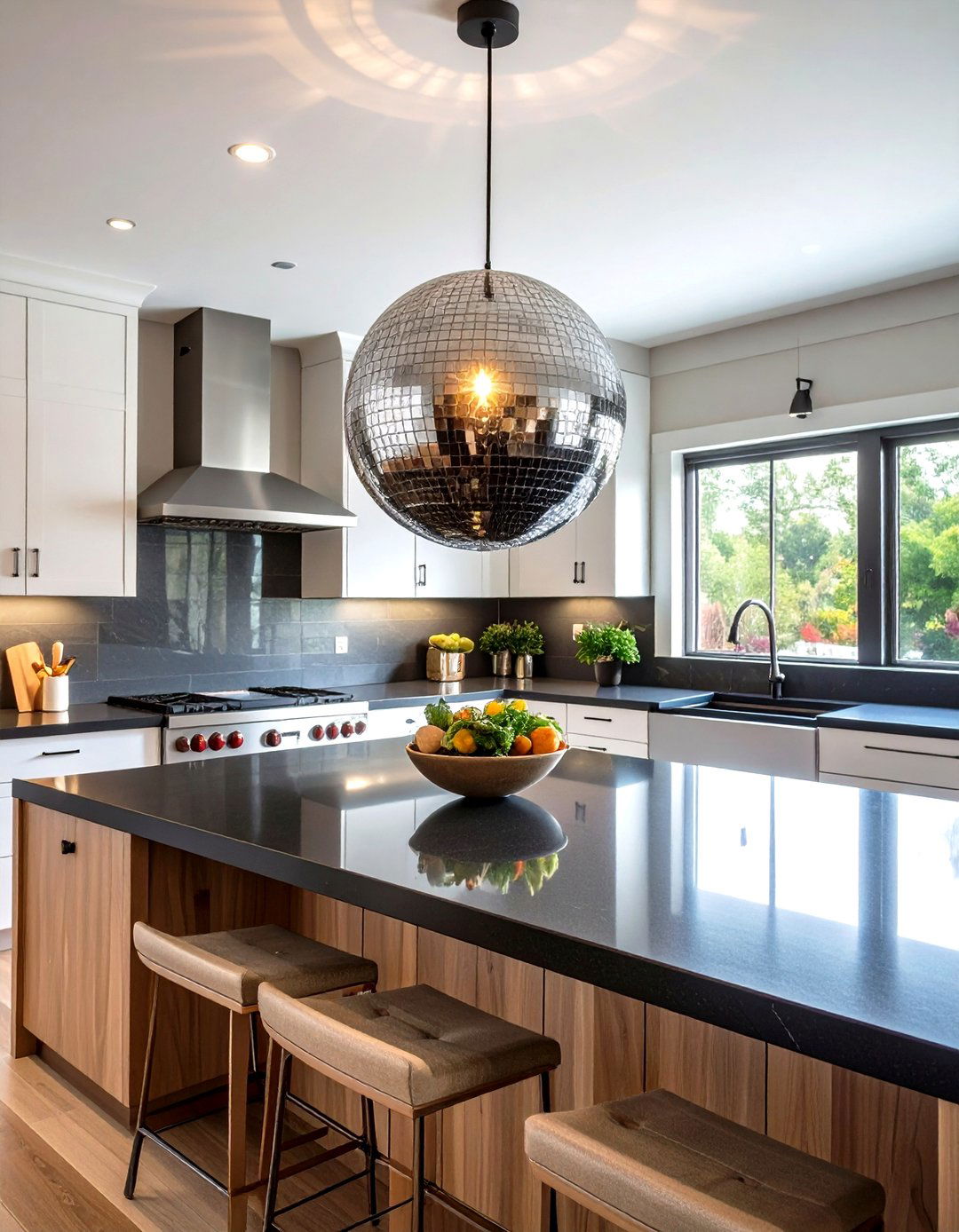
Surprisingly, a mirrored disco-ball pendant (or glittering chrome globe) scatters playful sparkles across countertops by day and sets a party mood by night. Hang it over the island at a height that avoids glare and let the reflective surface bounce light into darker corners. Pair with dim-to-warm LED bulbs so the effect shifts from bright prep lighting to soft dinner ambience, capturing the carefree spirit of 1970s entertaining without sacrificing function.
11. Built-In Home-Bar Entertaining Kitchen
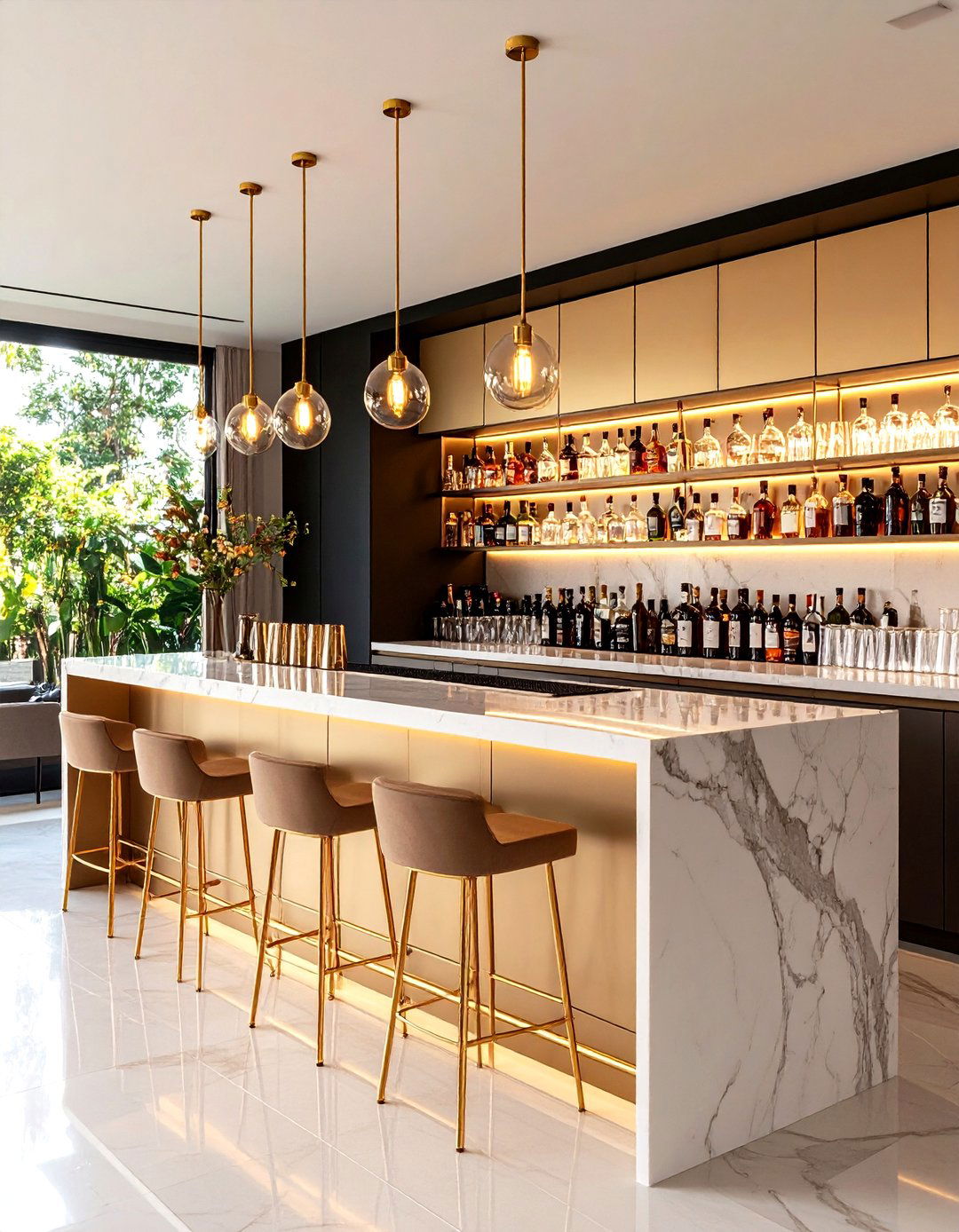
The decade’s love affair with cocktail culture birthed plenty of mirrored wet bars—and today’s open-concept kitchens are perfect for reviving the idea. Dedicate a small run of base cabinets for glassware, add a smoked-mirror backsplash, and top with a slim brass rail for bar tools. Even teetotal households can repurpose the nook as a coffee or smoothie station; the glitzy finishes still provide that nostalgic sparkle.
12. Two-Tone Cabinet Color-Block Kitchen
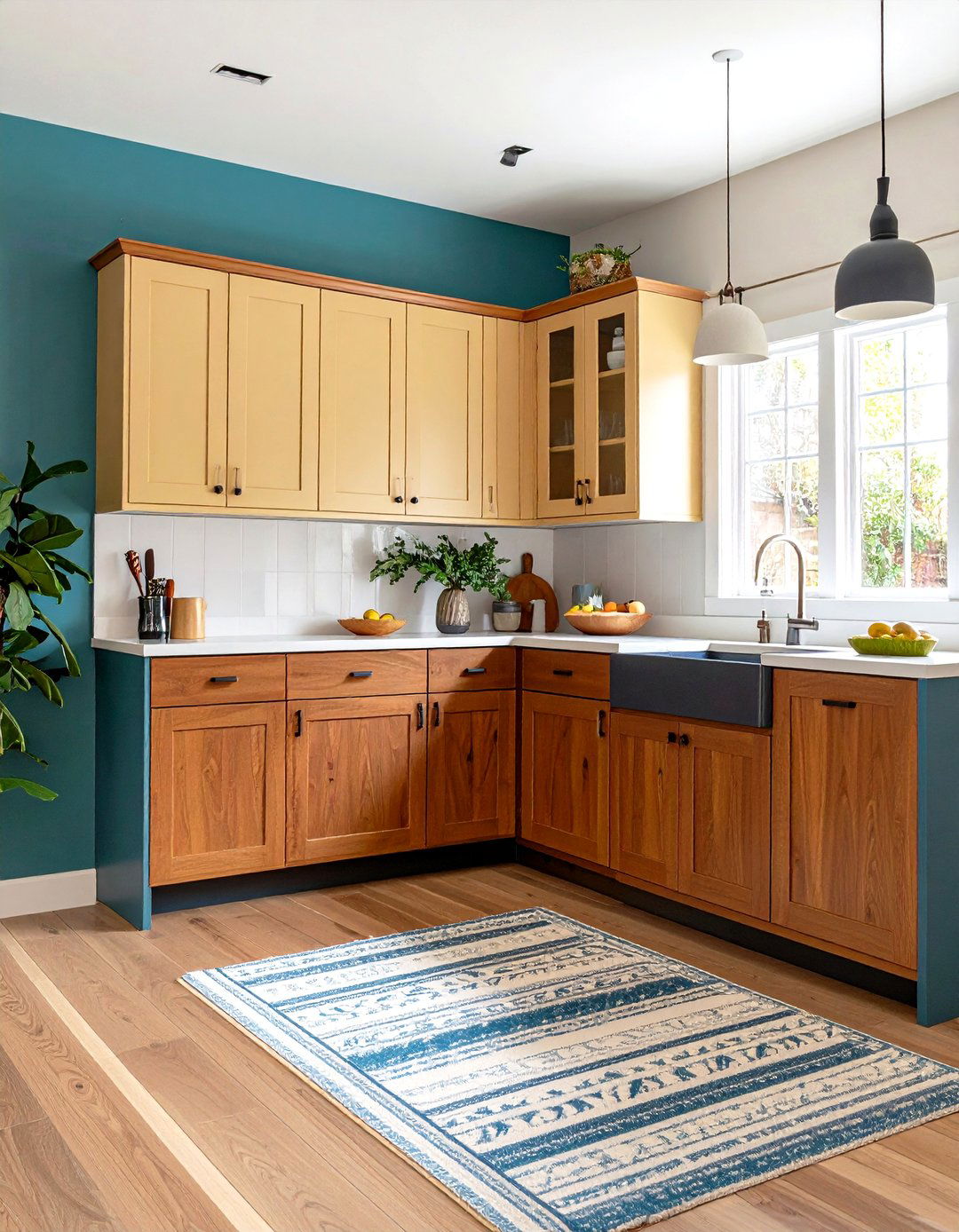
Looking for balance between bold and restrained? Paint lowers in a deep earthy hue and keep uppers pale for the archetypal two-tone 70s layout designers still recommend. The trick works wonders in compact kitchens, grounding the room while preserving an airy feel overhead. Tie both tones together with countertop accessories or artwork so the split reads intentional rather than arbitrary.
13. Wood-Paneled Warmth-Boost Kitchen
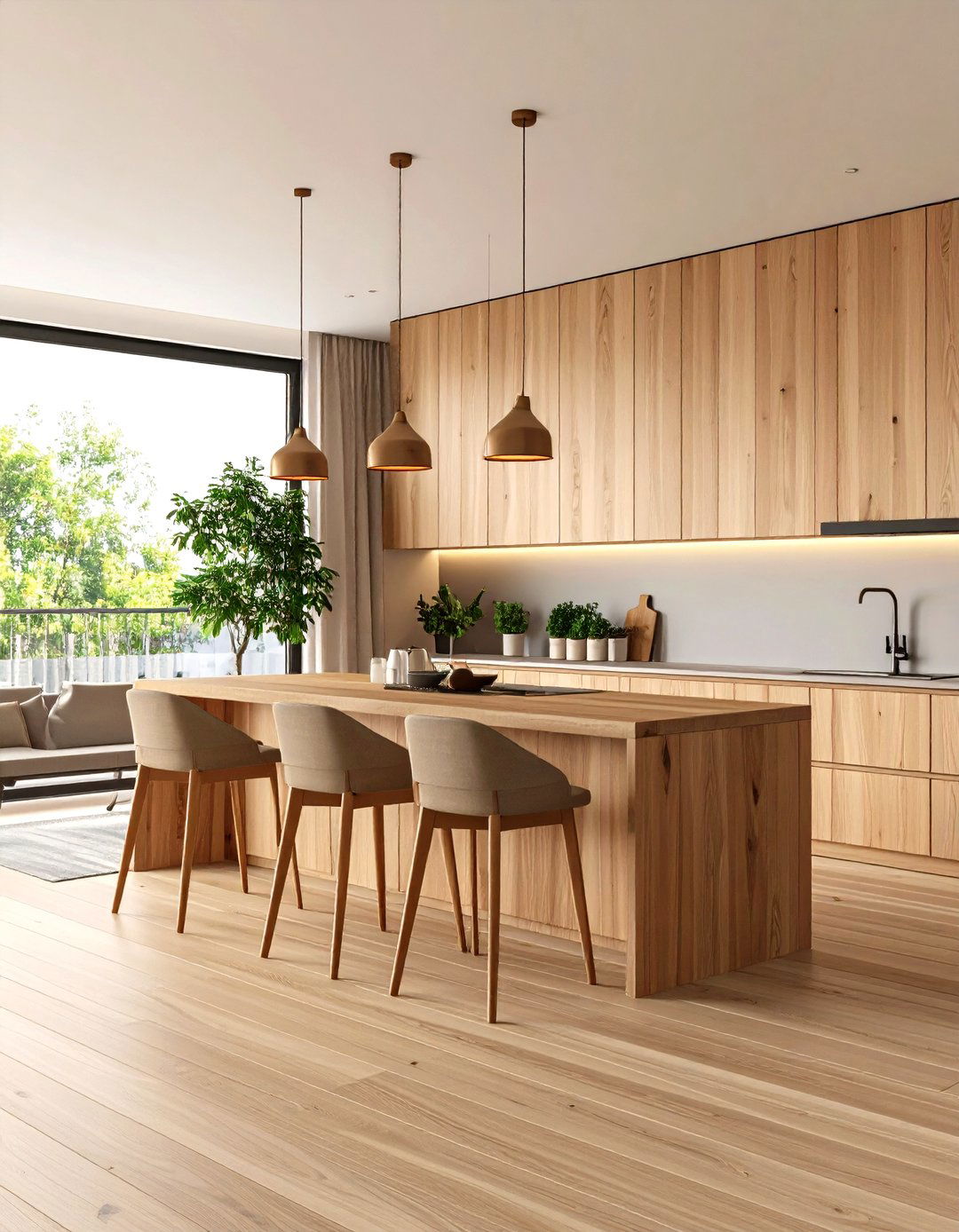
Goodbye shiplap, hello classic paneling. Designers note that refined vertical or horizontal wood panels lend rhythm and mid-century warmth without feeling like a basement rec-room. Clad a single wall or island back and seal with a matte stain that celebrates the grain. The subtle texture balances shiny appliances and gleaming tile, offering visual rest amid other statement features.
14. Statement-Tile Backsplash Drama Kitchen
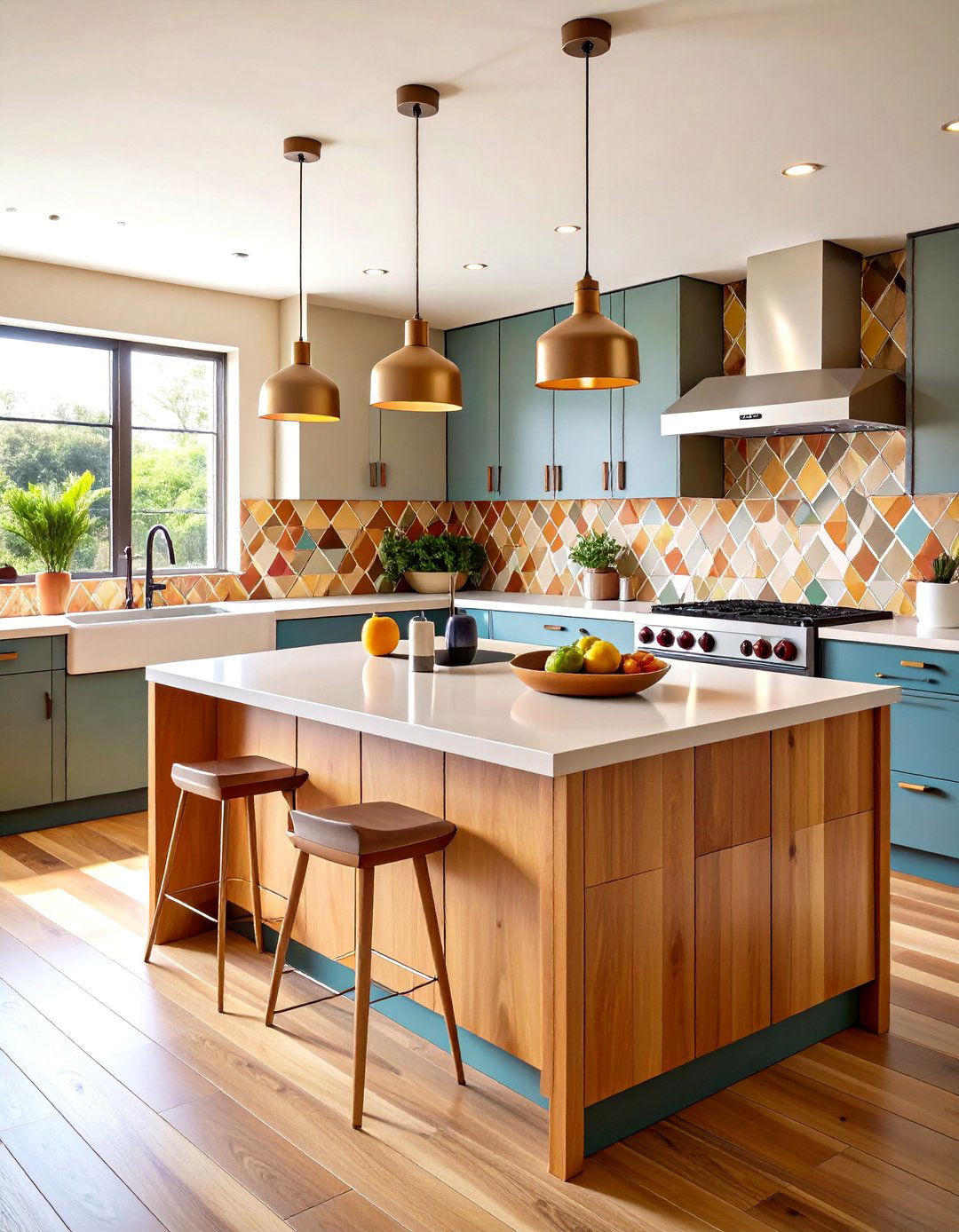
Introduce oversized, earthy-toned tiles laid in daring geometric patterns to echo 70s flair while taking advantage of modern grout tech. A full-height backsplash behind the range becomes art, so choose colors that link countertop and cabinetry palettes. Keep countertops understated to let the tile sing, and repeat one of the shapes in nearby textiles for an intentional echo.
15. Chrome-Edge Industrial-Touch Kitchen
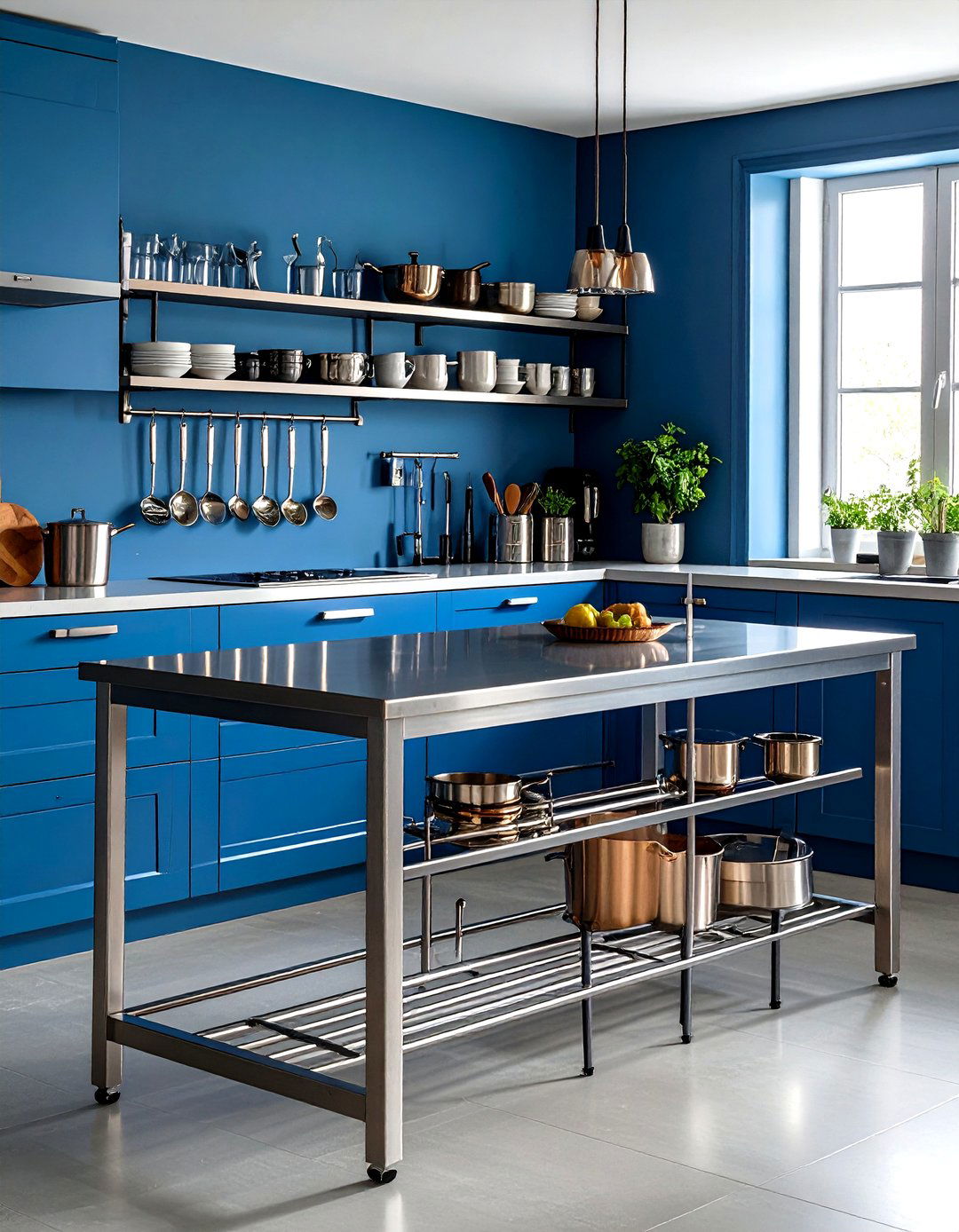
Homes & Gardens flags stainless and chrome details as a key 70s holdover that still reads fresh when used sparingly. Swap standard pulls for tubular chrome bars, add a vintage steel-topped table, or install a sleek rail-and-hook system for utensils. The cool metal cuts through warm woods and colors, ensuring the kitchen feels balanced rather than overly rustic.
16. Macramé-Hanger Texture-Layer Kitchen
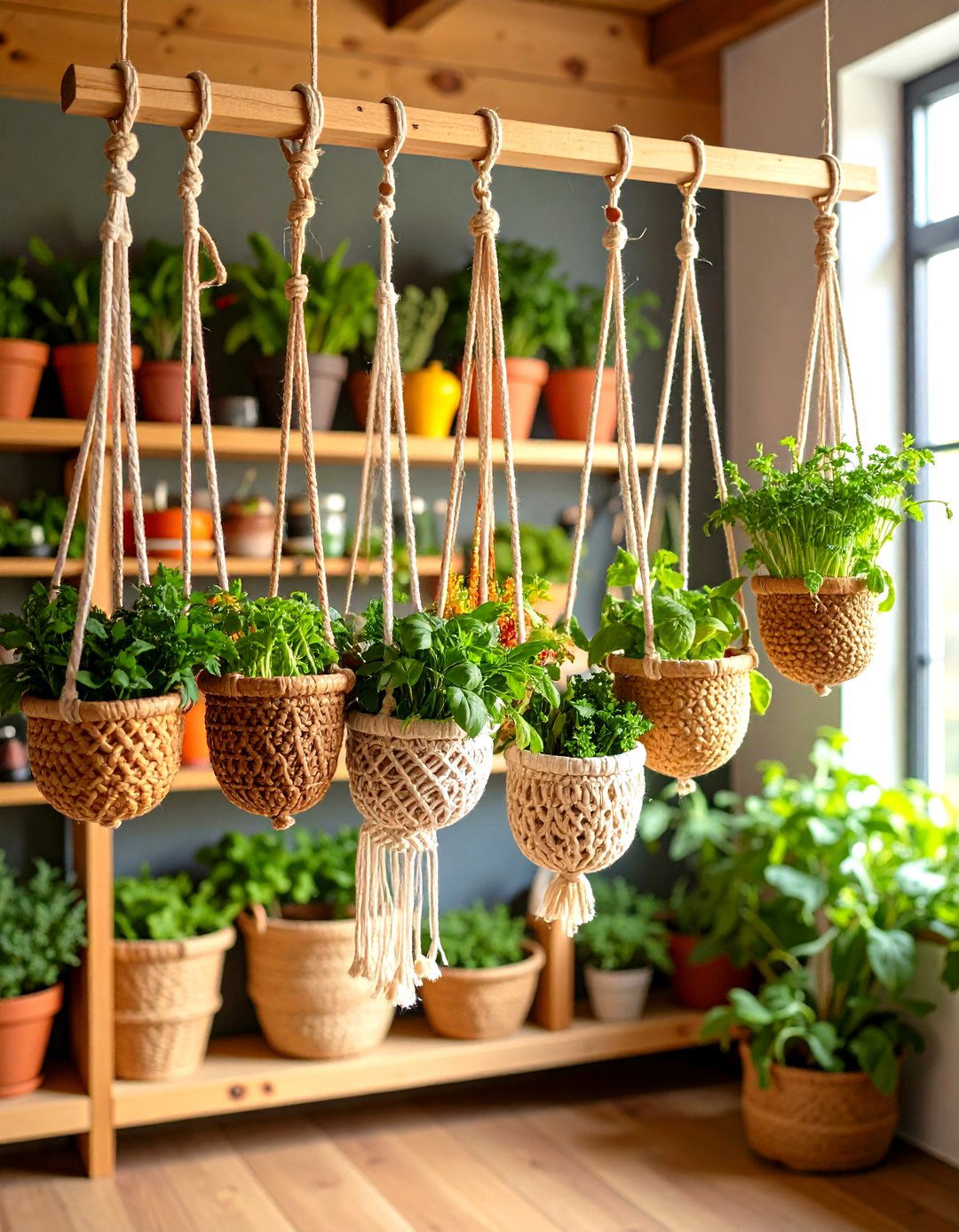
Another, softer way to weave 70s craft into a kitchen is by suspending herb pots or produce baskets in knotted cotton macramé. The vertical storage frees counter space, spotlights your home-grown basil, and adds a handmade note that pairs naturally with rattan, wood, and brass. Keep hangers near good light and away from stovetop heat for longevity.
17. Table-Lamp & Art-Layered Mood Kitchen
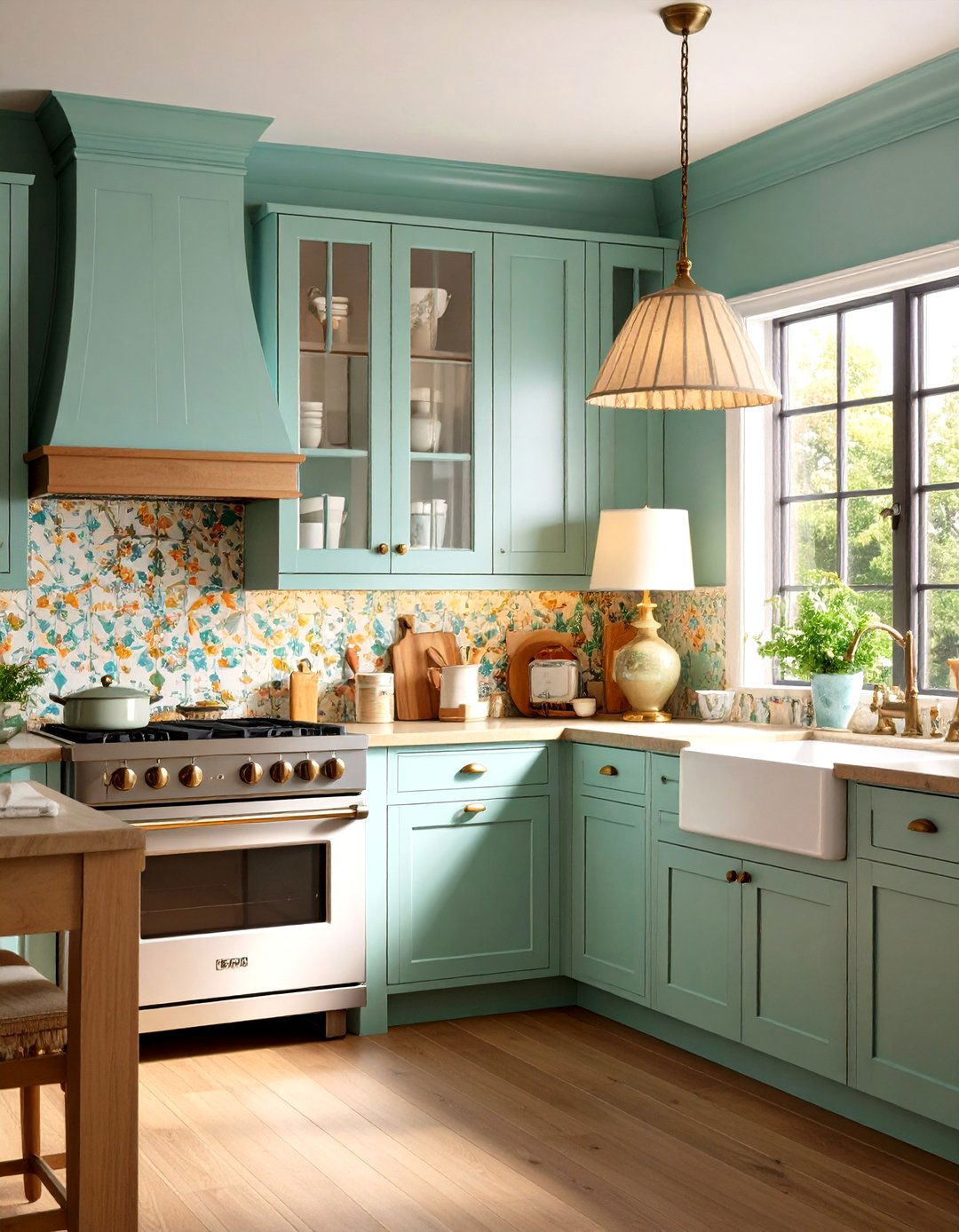
Real Simple’s experts insist a petite lamp under the cabinets and a tiny painting propped on the backsplash make a kitchen feel collected, not showroom sterile. Choose a retro-patterned ceramic base and a linen shade so the glow is warm and diffused. The lamp’s cord hides behind canisters, while framed art breaks up endless tile. These micro-layers invite guests to linger and visually link the kitchen to adjoining living spaces.
18. Laminate-Counter Pop-Color Kitchen
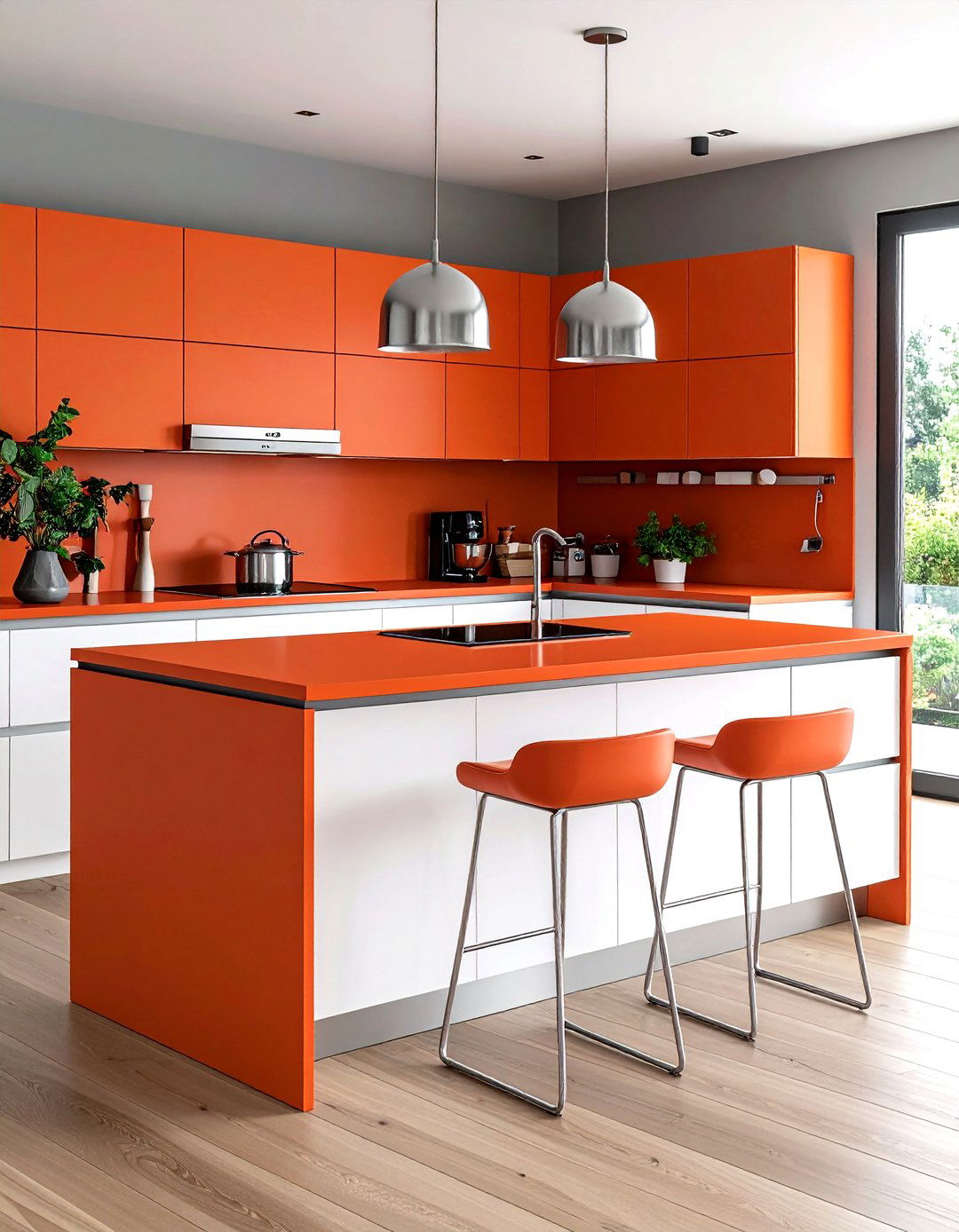
Formica counters in saturated colors were a 70s staple—and newer scratch-resistant formulas let you revive that vibe on a budget. Install a cheerful burnt-orange sheet on a petite island or breakfast bar and edge it in slim chrome for authenticity. Because laminate is lightweight, DIYers can tackle the swap over a weekend; if tastes change later, replacement is painless compared to stone.
19. Sculptural Range-Hood Focal-Point Kitchen
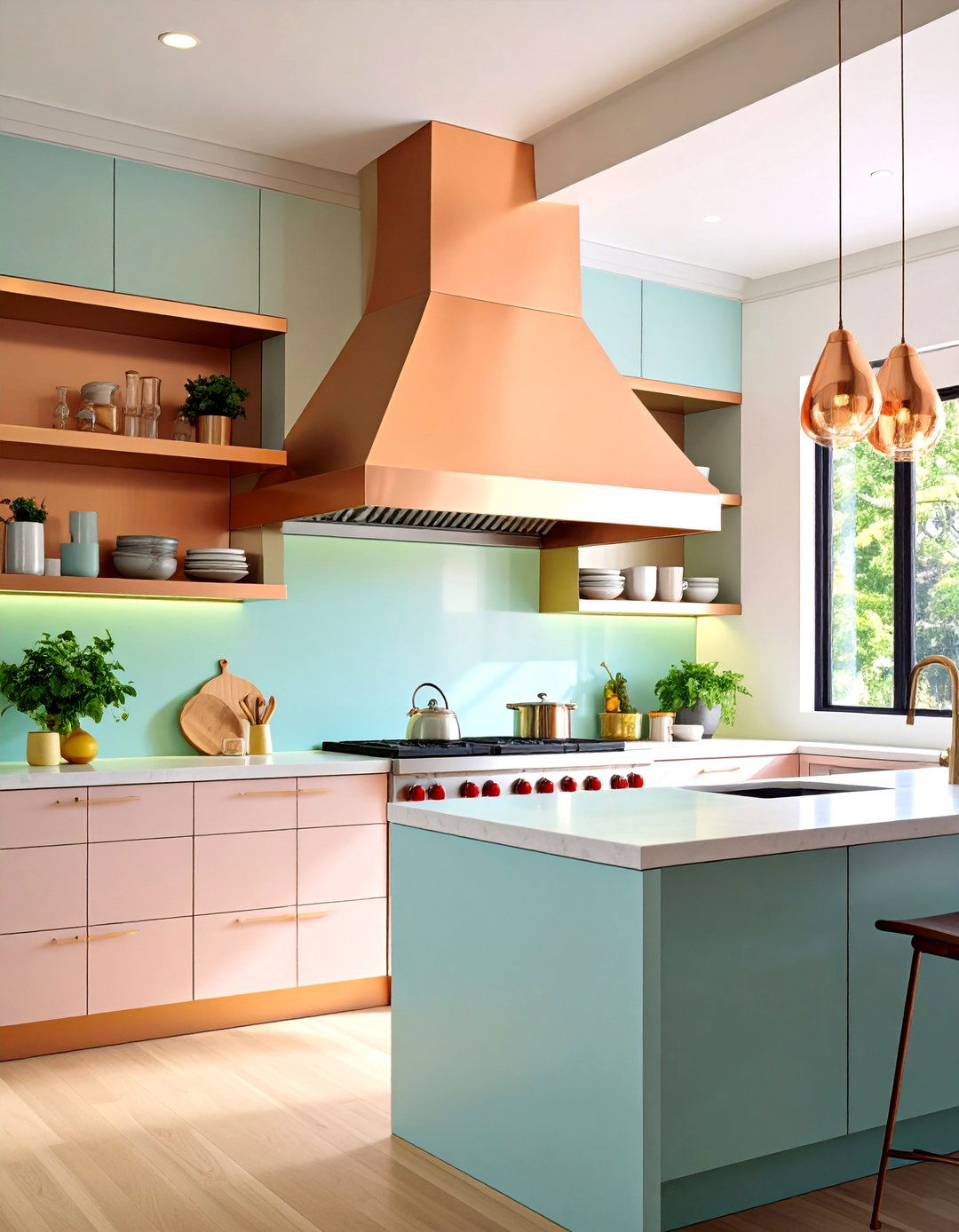
Designers are treating the range hood as sculpture, borrowing from 70s curves and bold color blocking to crown the cooktop. Wrap a standard insert in rounded plaster or clad it in copper for warmth. A statement hood draws the eye upward, balancing busy lower cabinetry and anchoring open shelves with a purposeful centerpiece.
20. Quiet-Maximalist Layered-Pattern Kitchen
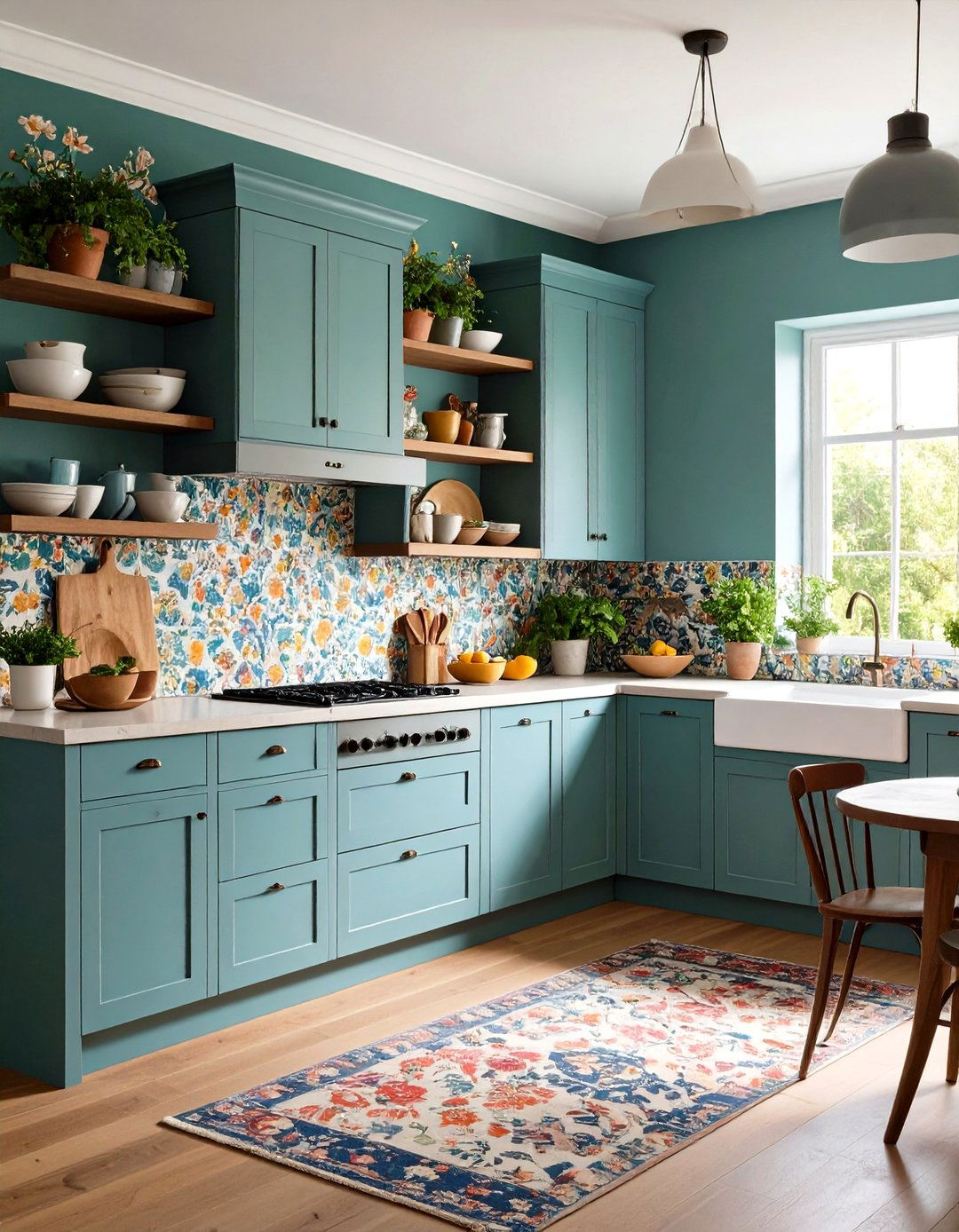
Finally, embrace “quiet maximalism”—layered color, print, and collected decor done with intention, not overload—to capture the lived-in charm of a true 1970s kitchen. Mix one bold wallpaper, two accent colors, and a handful of vintage finds rather than cramming every surface. This curated abundance feels vibrant yet comfortable, letting your personality shine while ensuring the space still functions beautifully day to day.
Conclusion:
Retro doesn’t have to mean relic. By mixing one or two of these 70s kitchen ideas—be it a slab of terrazzo, a disco-ball pendant, or just a houseplant in a macramé sling—you’ll inject warmth, character, and a dash of nostalgia into the heart of your home. Each tip scales up or down, letting you craft a kitchen that honors the past yet feels perfectly at ease in 2025.


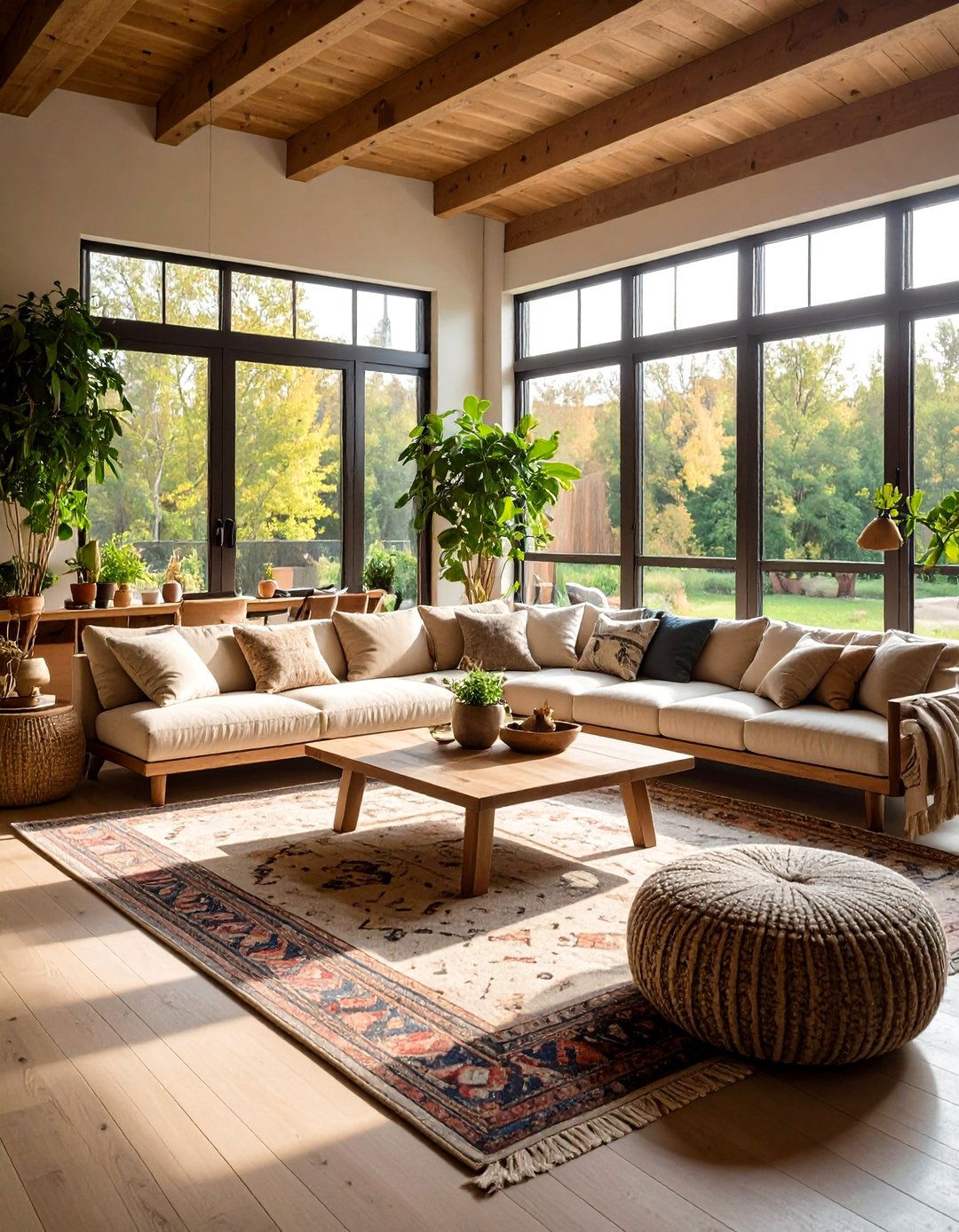
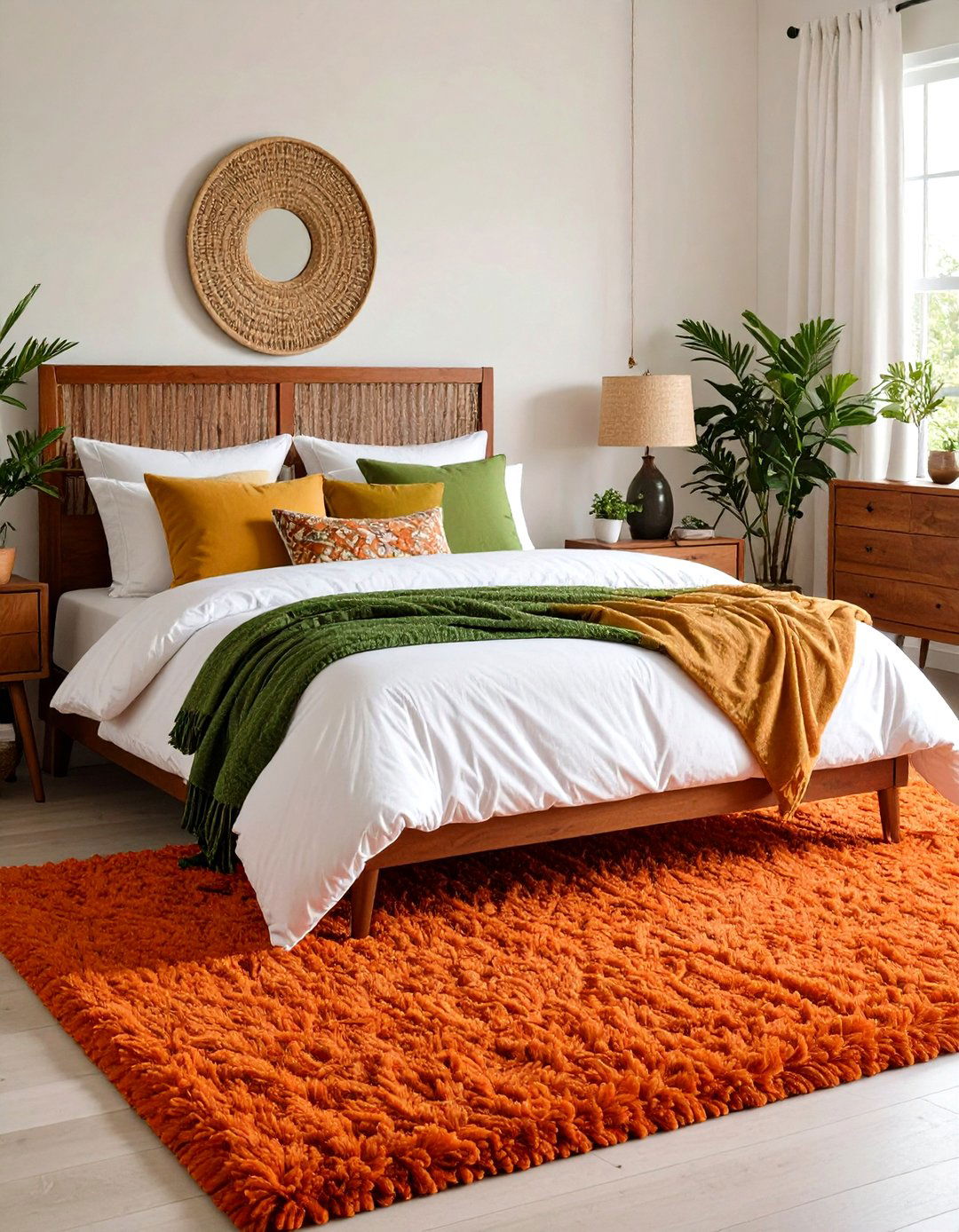
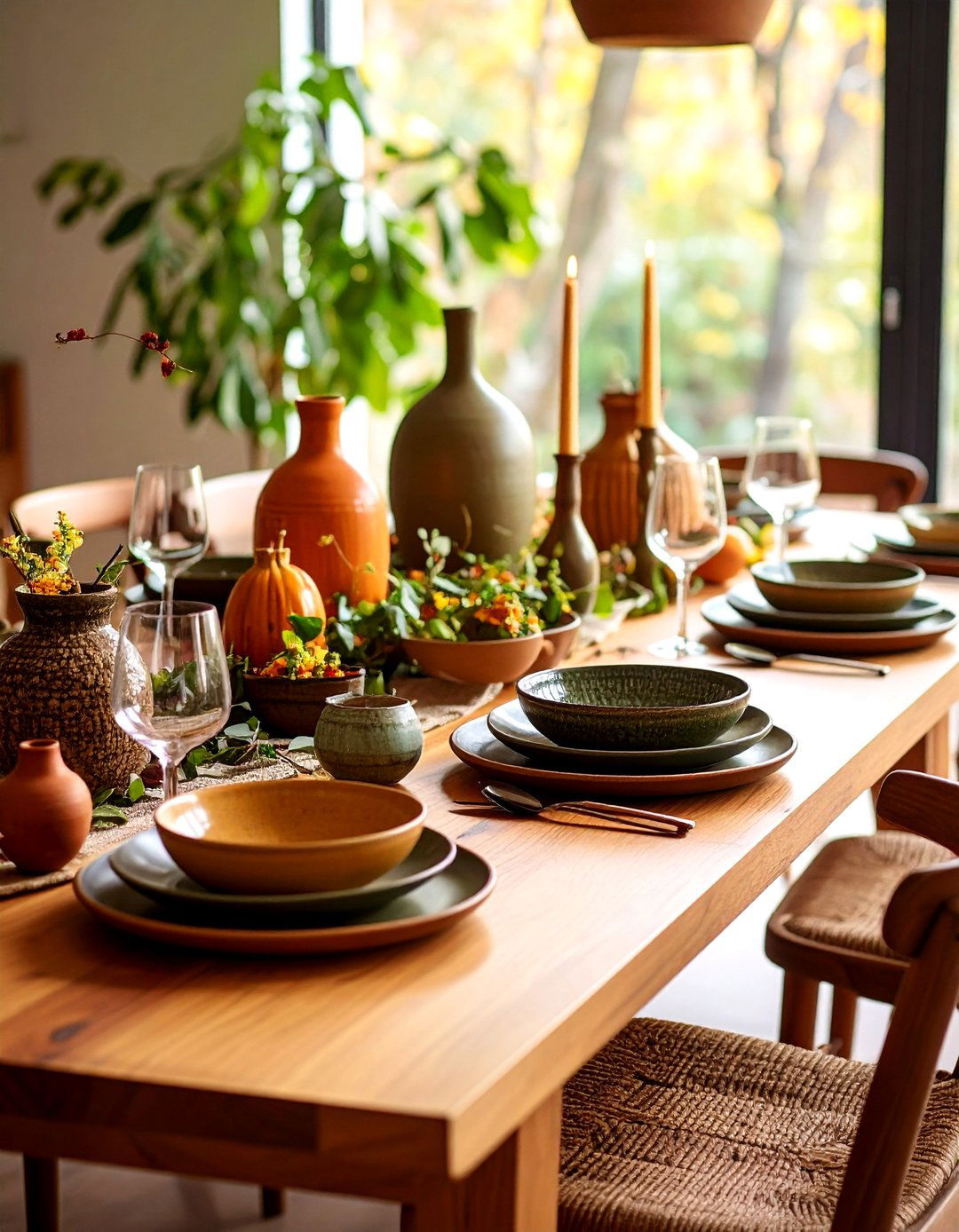
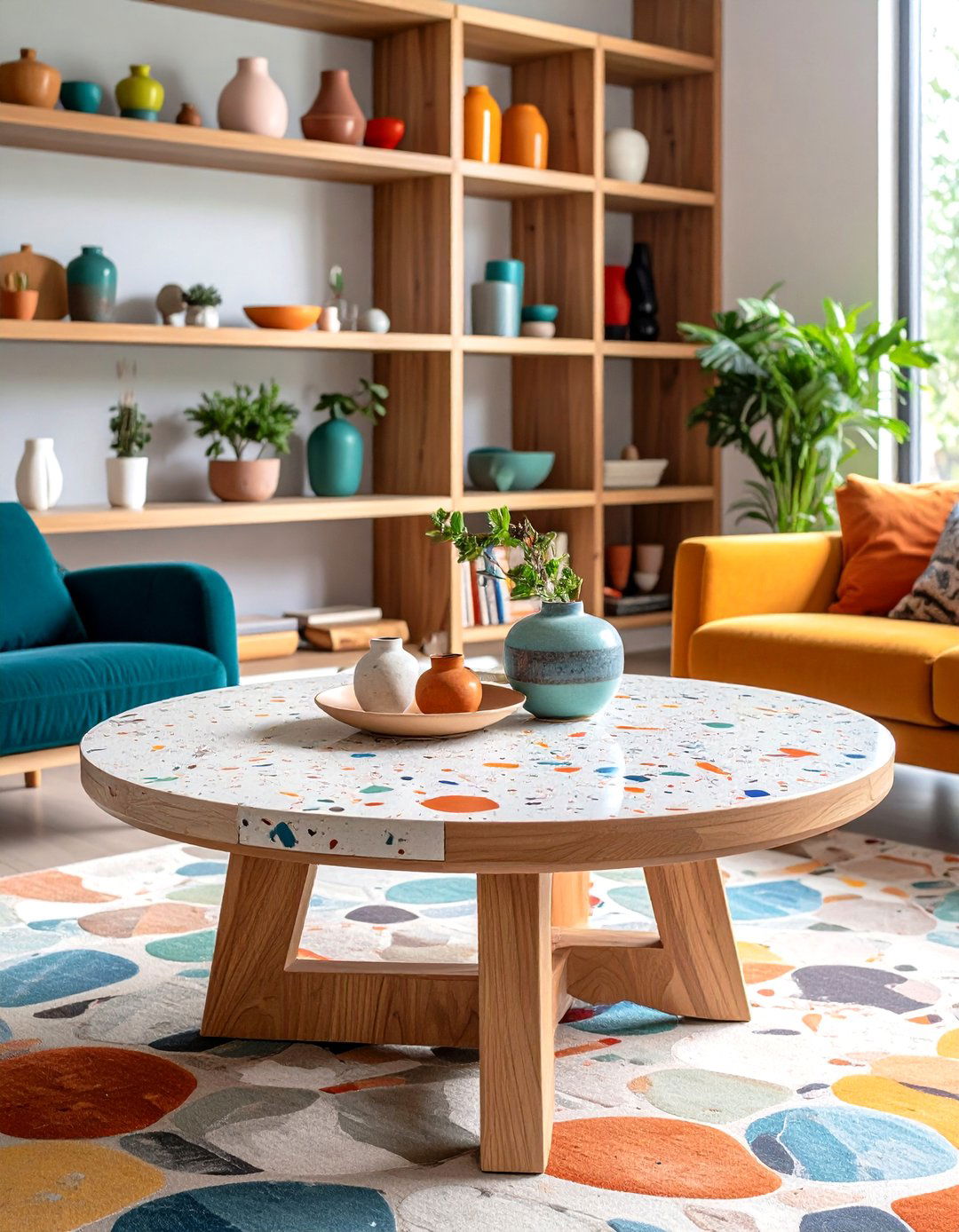
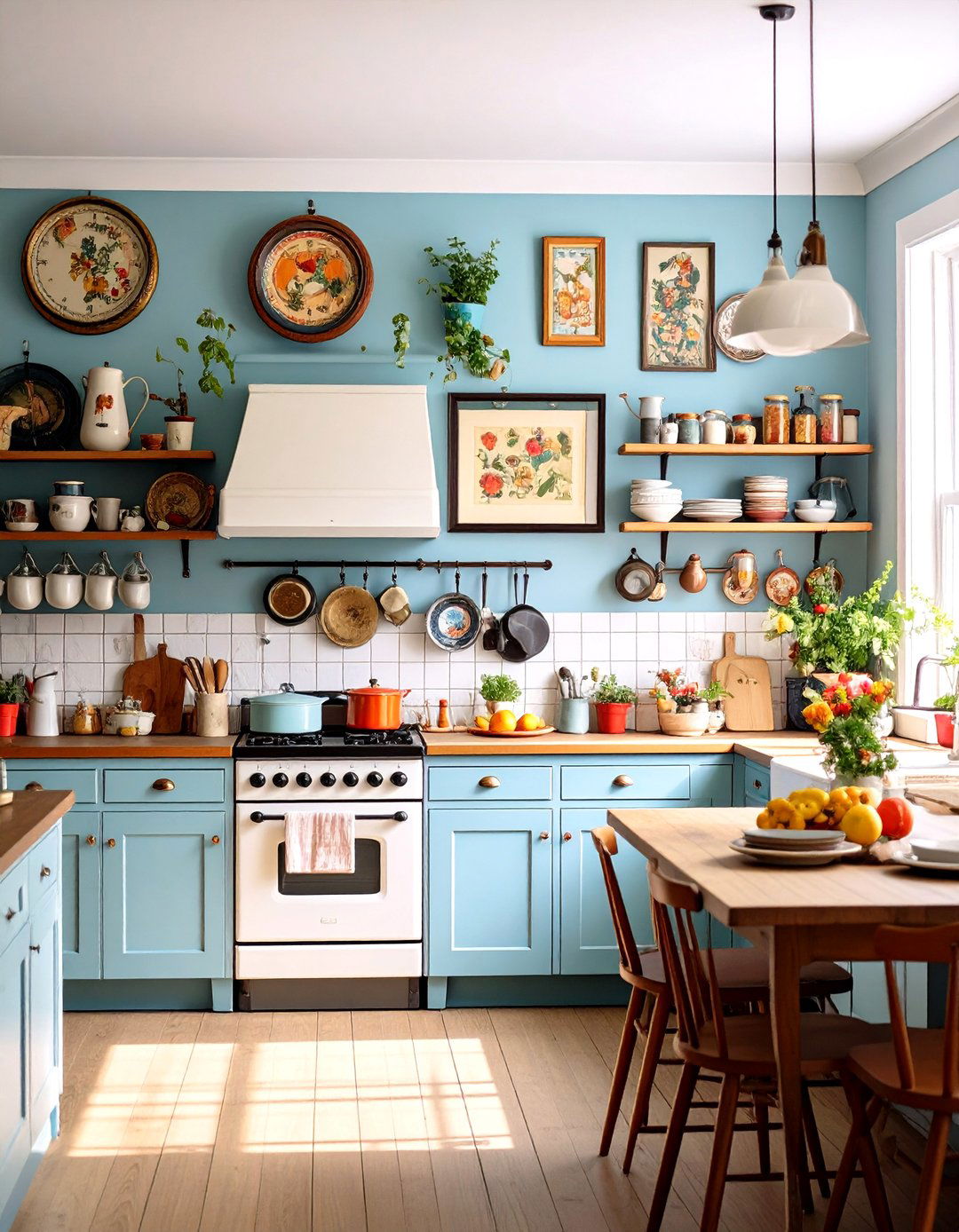
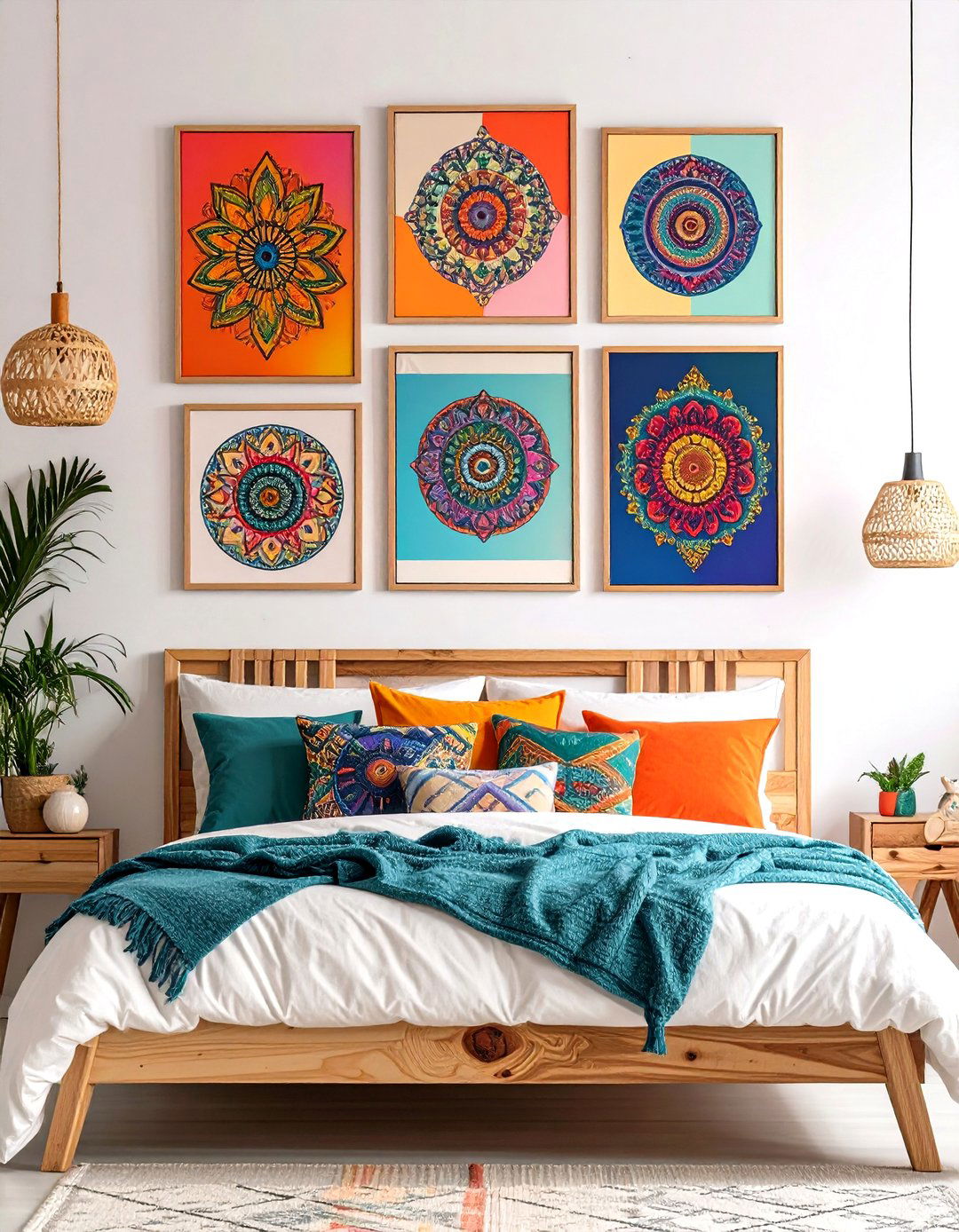
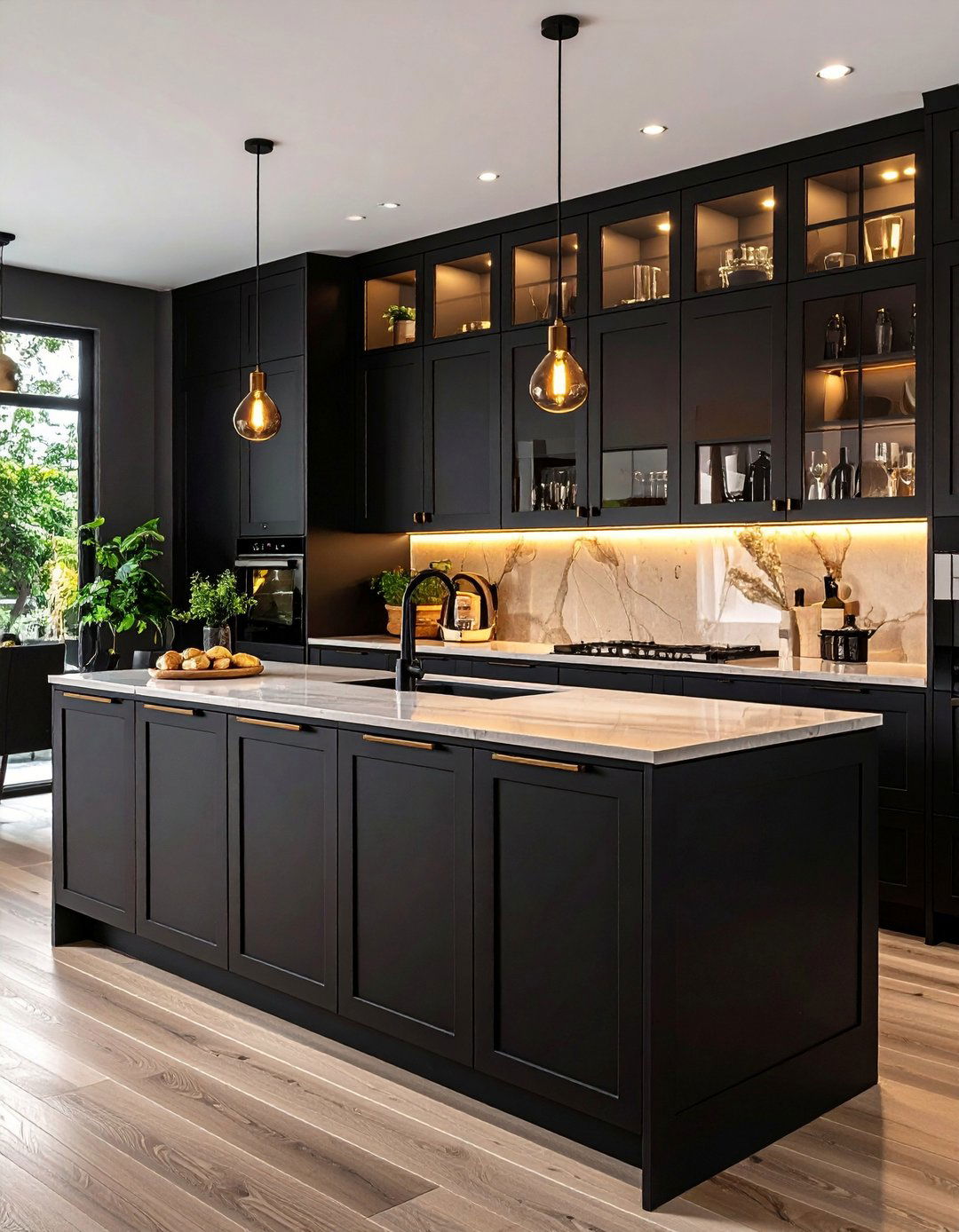
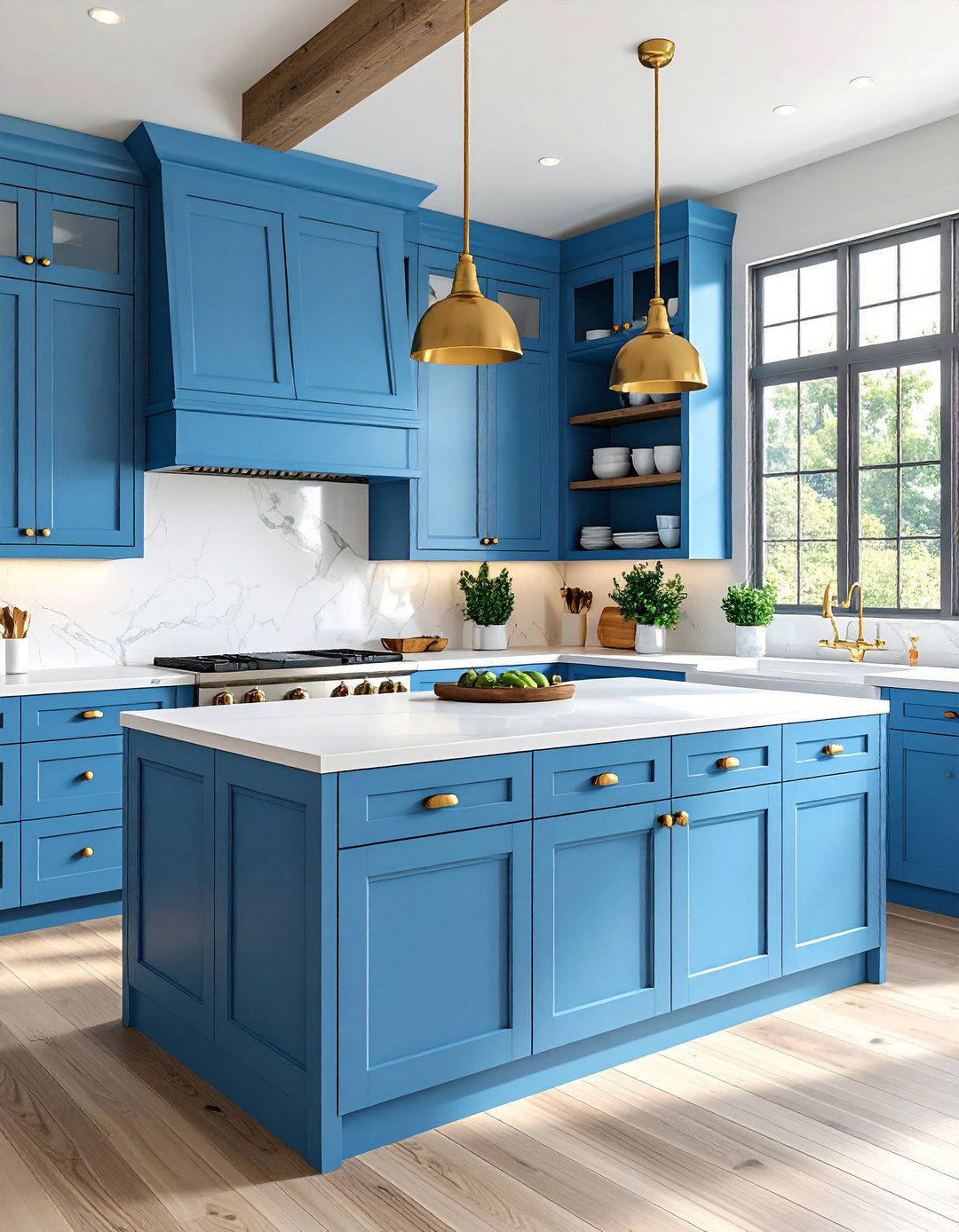
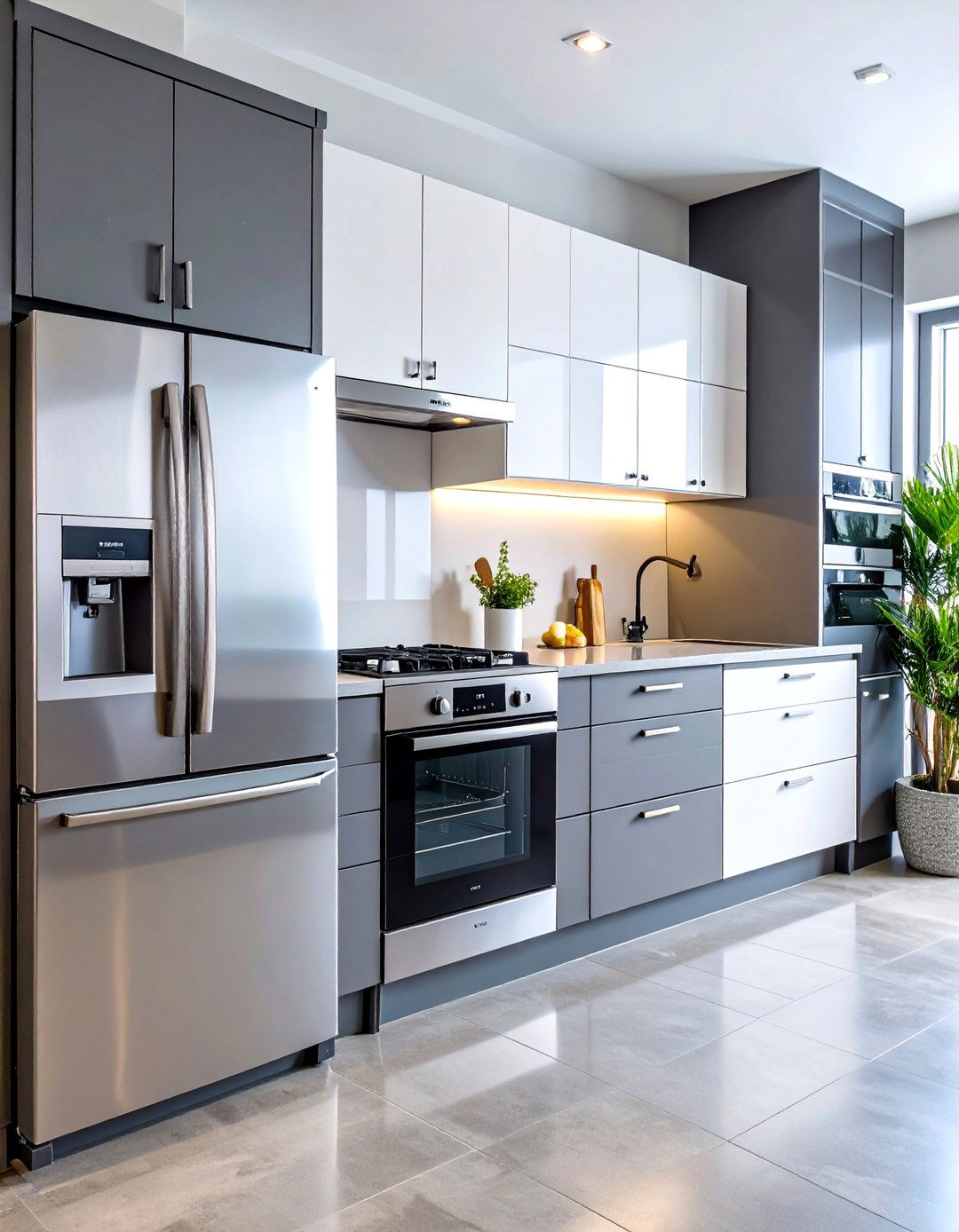
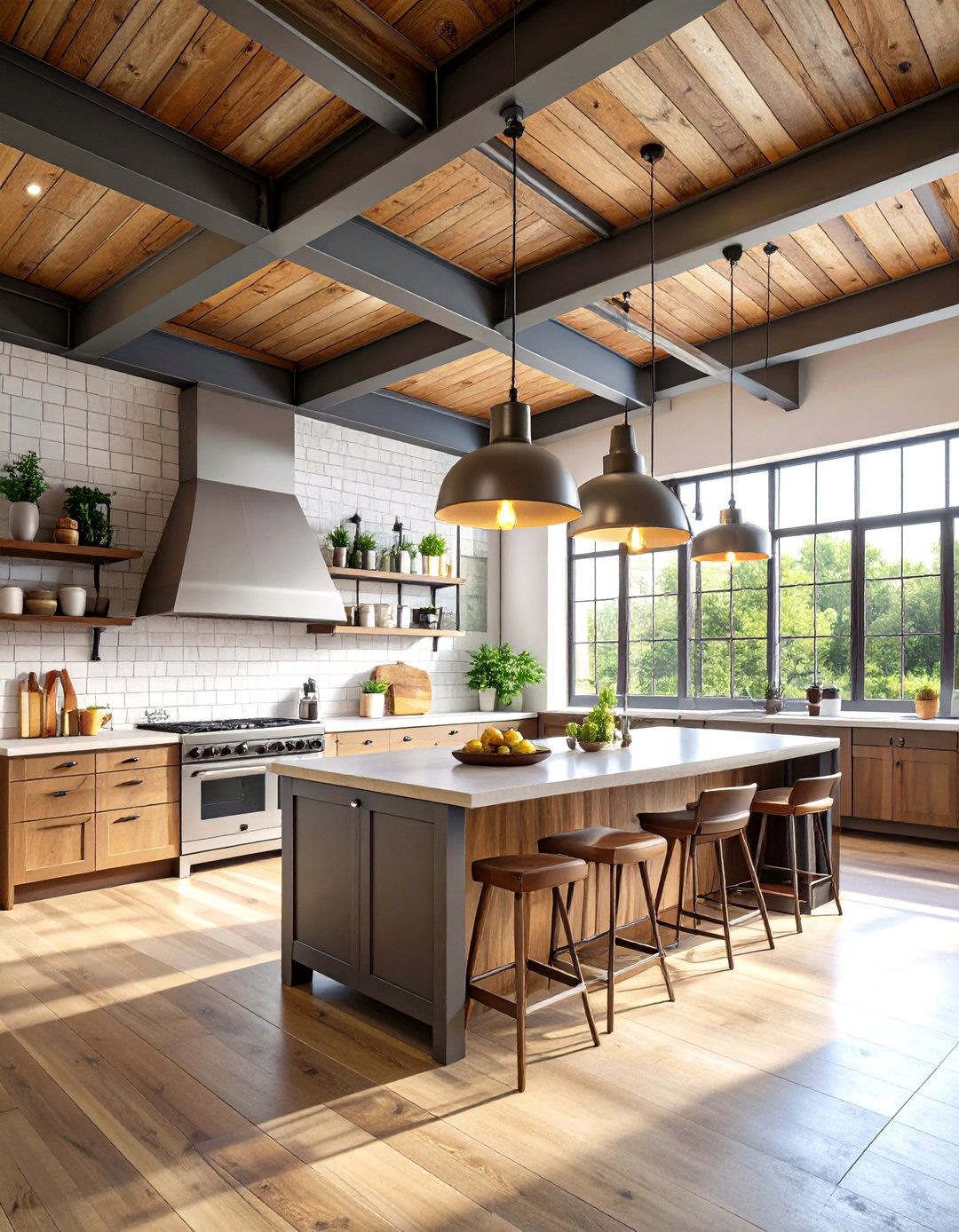
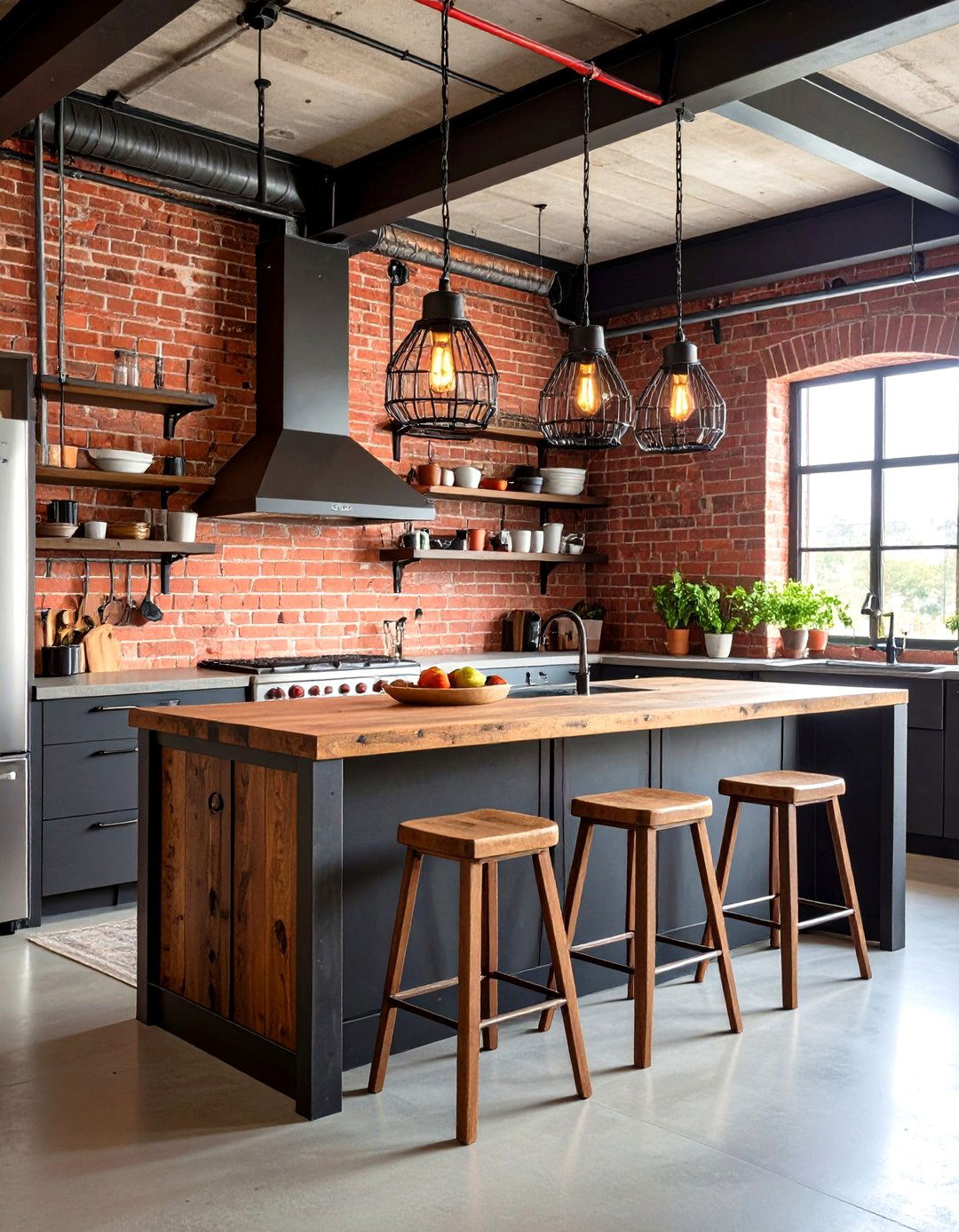
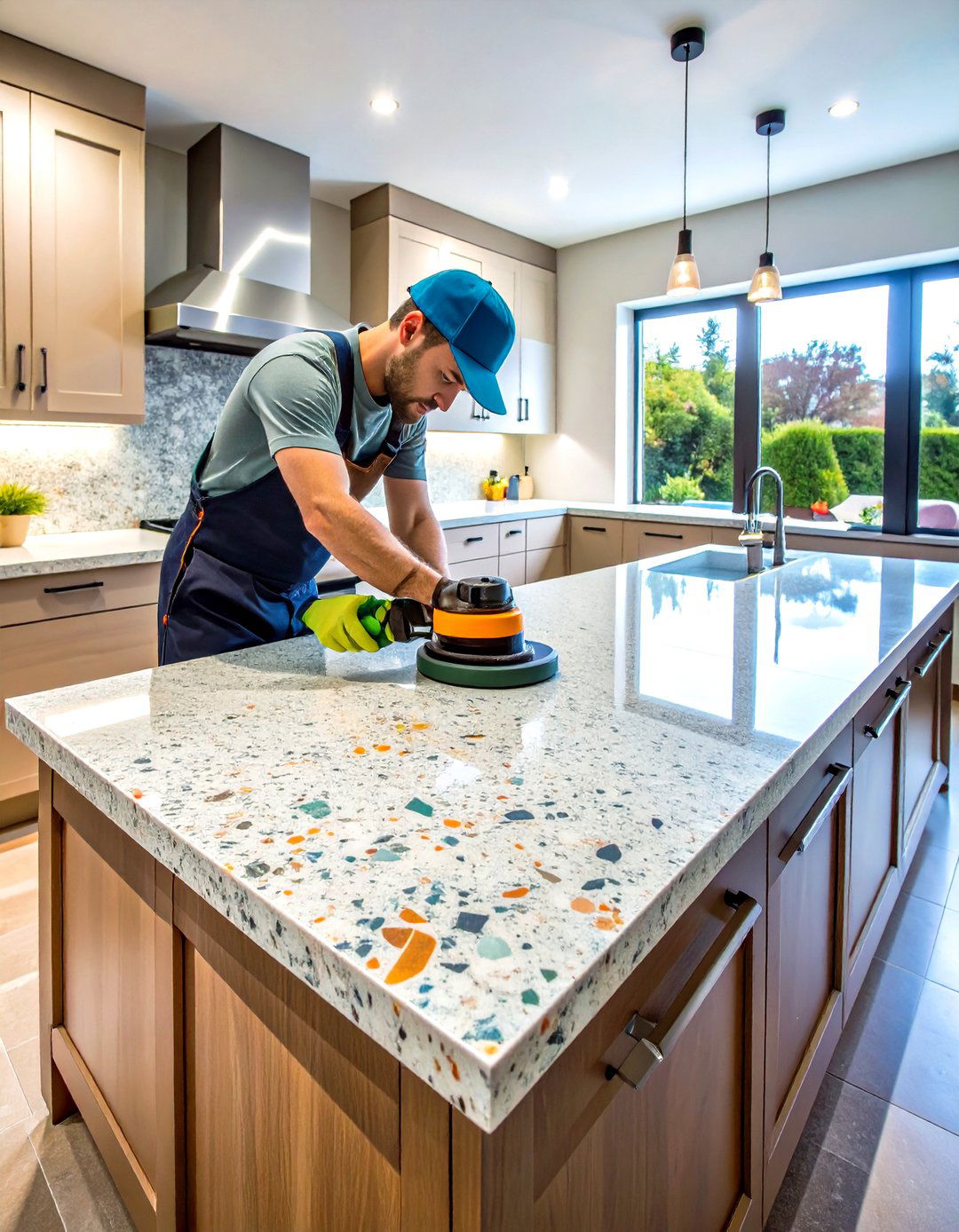
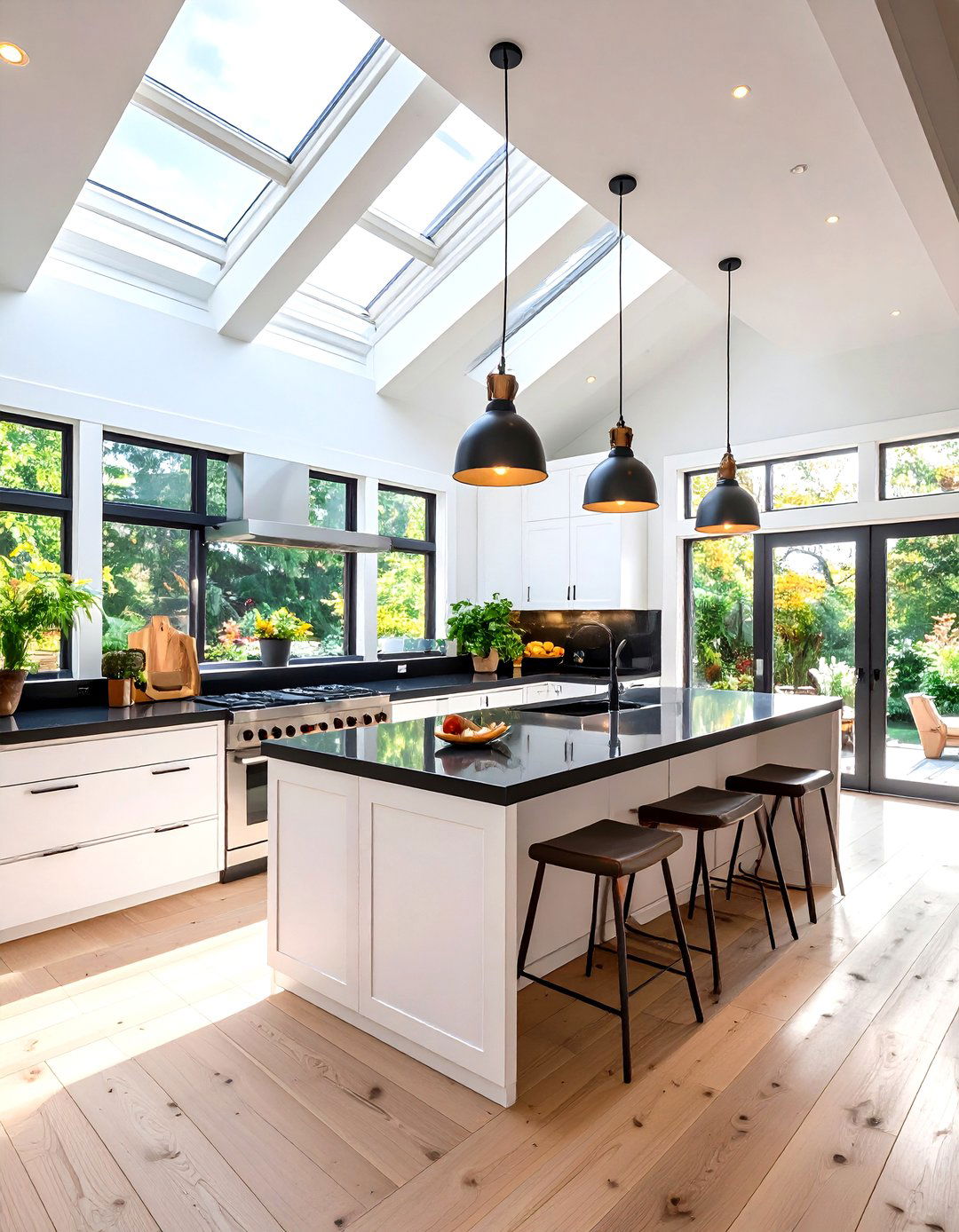
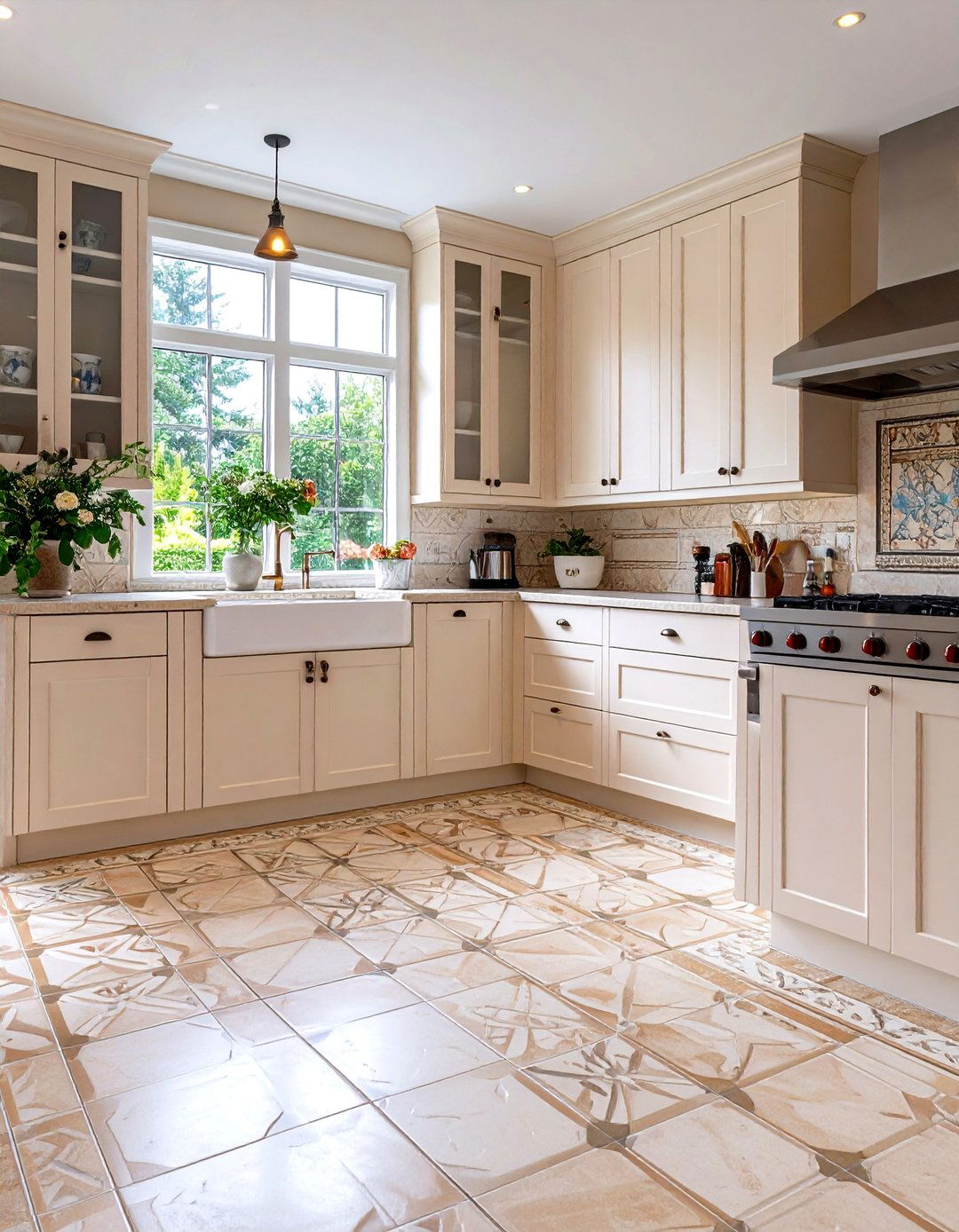
Leave a Reply